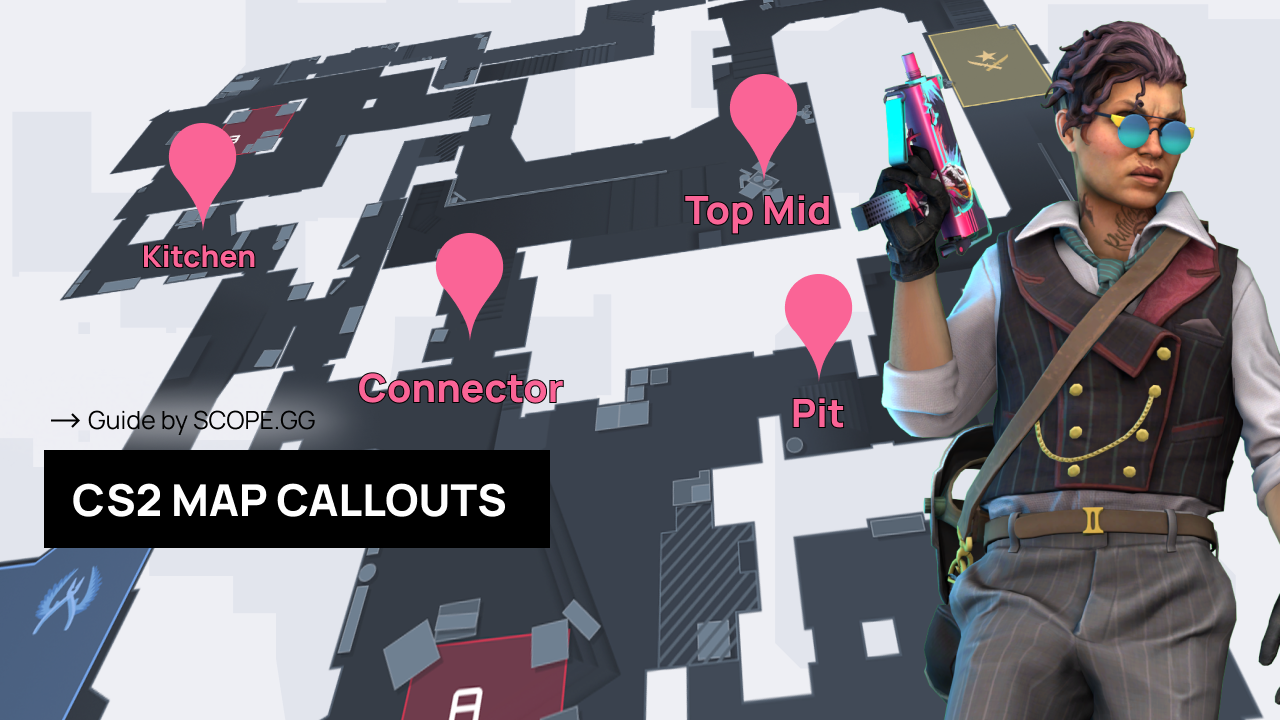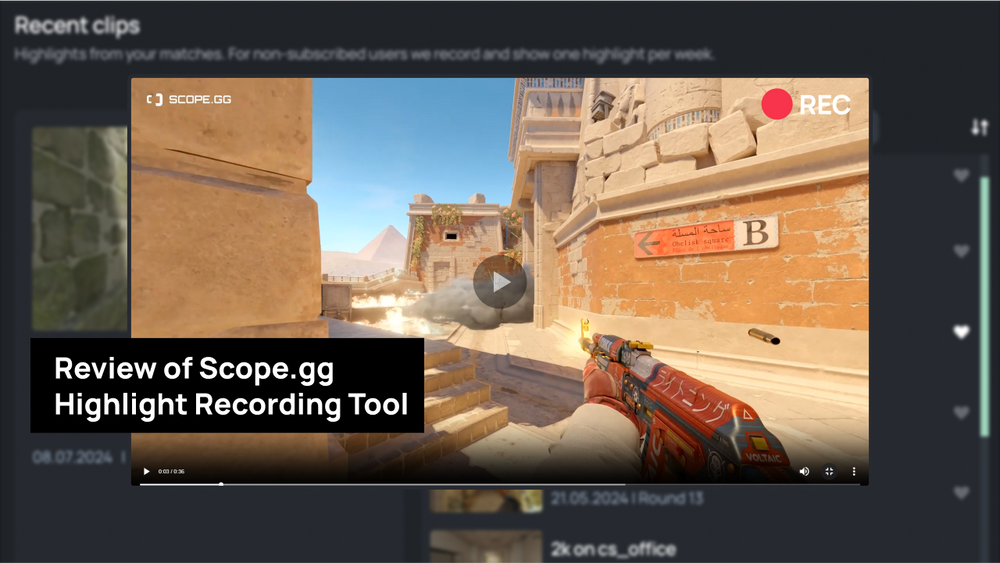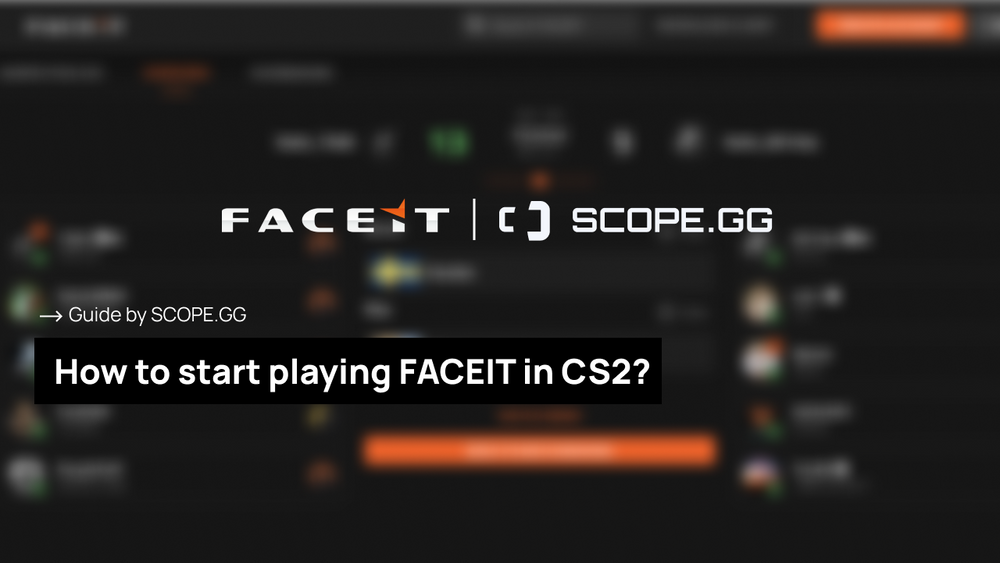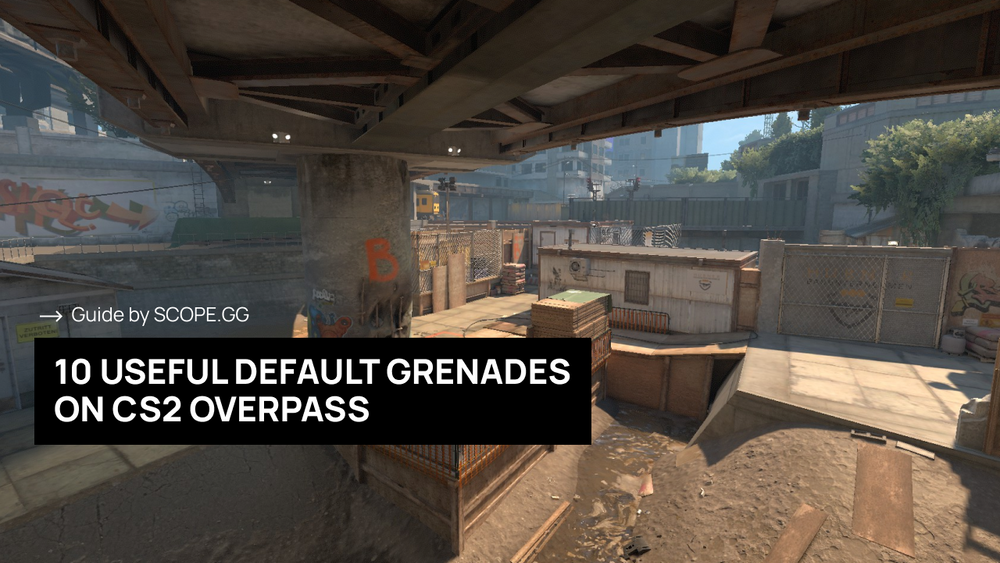You probably remember something like this - you find a ranked game of CS2 and any time during the match you hear your teammate saying something like: "He’s right there, behind the box” or “He’s on your left”. Who is your teammate addressing to? Who should react to this information and what should player who’s on the other side of the map do?
Learning maps’ positions is as crucial as practicing your aim. It’s not as hard as you’d think. It’s the same as learning a poem back at school. Learning the map that you play on every day should be even easier.
Why should you learn callouts in CS2?
The ability to quickly tell your teammate enemy’s position will allow him to trade you or just save his life. That’s why since the time immemorial, when Counter Strike was just a mod for Half-Life and was played at computer clubs, players had a tradition to name key positions on the map with short and clear names. That’s why now we have positions on every map that have somewhat similar names. Why would you think of some fancy name for a central passage on a map if you can just call it “mid”?
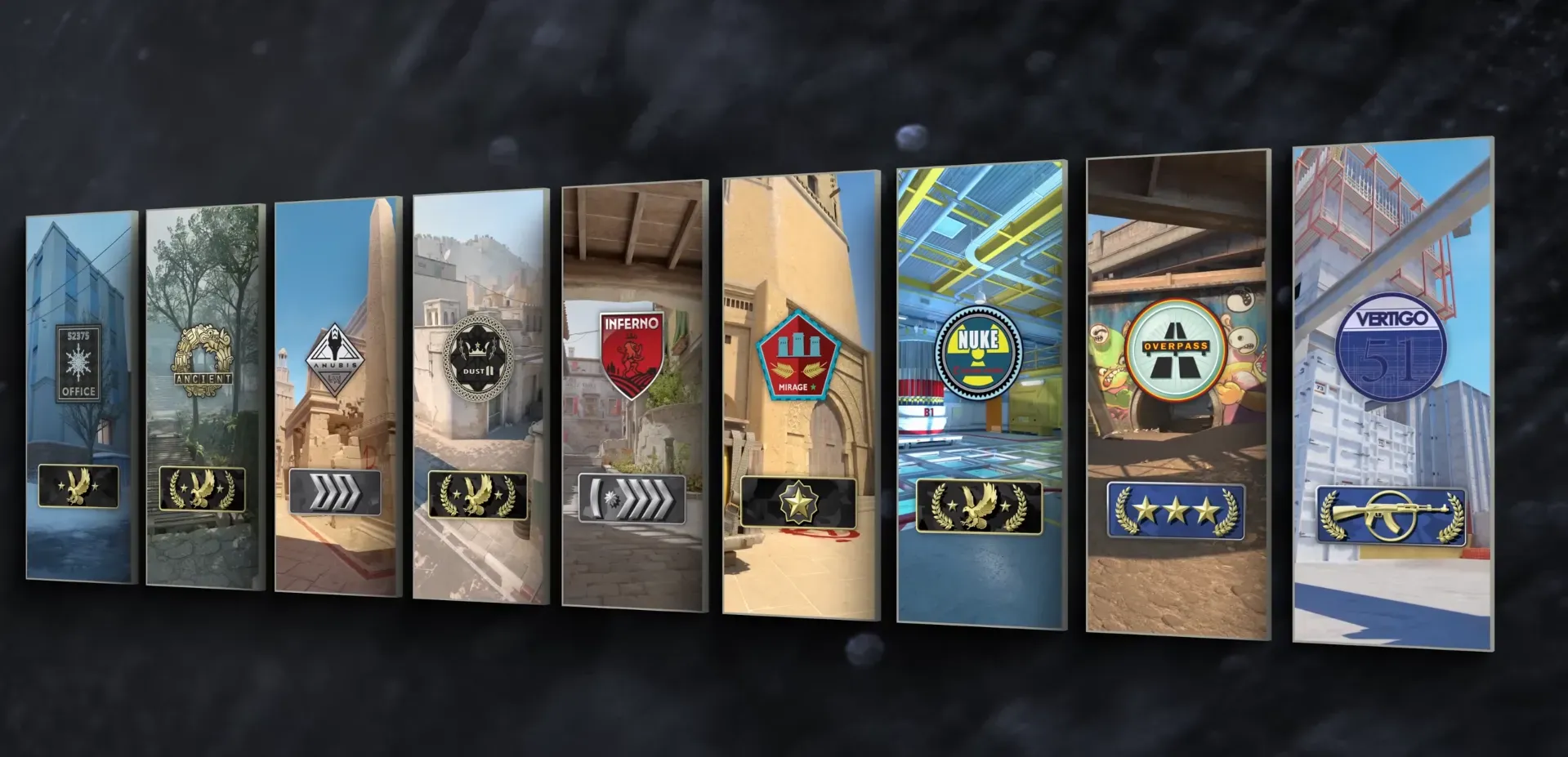
On the other hand, new players only know 5-6 names for main positions on a map, like mid, left, right, A, B and out there somewhere. New (and sometimes veteran) players tend to forget that every map has a lot of places to hide and each has its own name. How can you explain what box your enemy is hiding behind? Usually new players just tell the general direction: “He’s on B”. That doesn’t make it easier for you, you still have to check behind every corner, every barrel, instead of just prefiring at your enemy. That makes you waste precious time and may even cost you a round.
That’s why we’re going to look at all key positions on all CS2 competitive maps.
How to remember map callouts?
The main advice we can give is to learn English callouts. Sooner or later you’ll queue without a premade of 5 and not everyone may understand the callouts in your native language. That’s when the knowledge of callouts will come in handy.
We’ll start with classic maps, moving to the harder ones later.
Mirage callouts
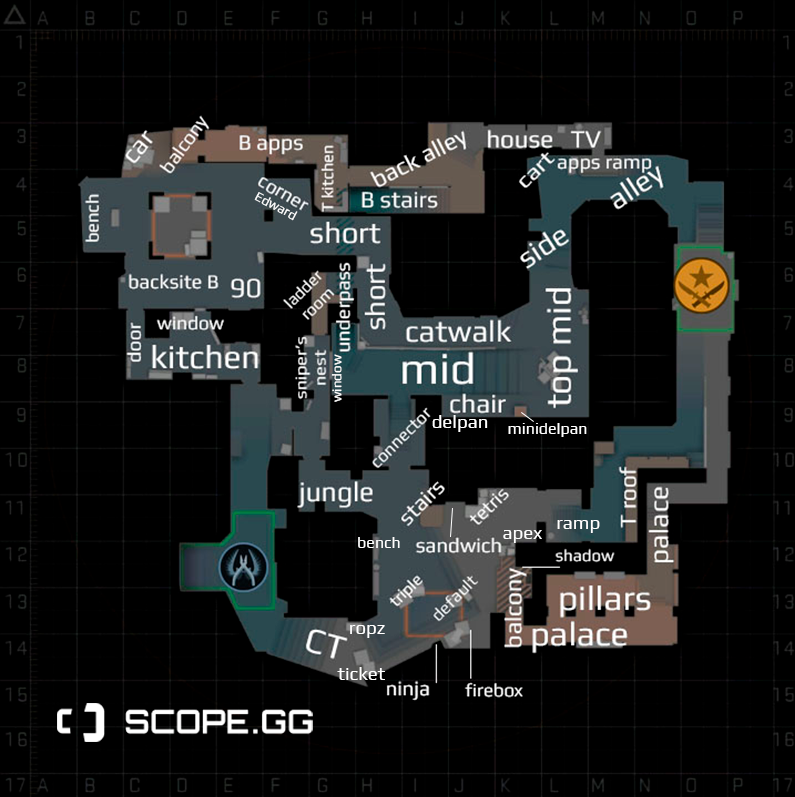
Mirage is one of the easiest maps. To take control of it, all you need is to take the middle and to fight for both plants and the catwalk. That’s why all you need to remember are all positions on A and B, including all covers and adjoining pathways and all corners on the middle, including connector. That’s like 15 callouts that you need to memorize, something you can do in 3 matches on this map.
Most positions are quite easy to remember, like tetris is called tetris because it’s a bunch of boxes stacked on each other, ticket is called ticket because it looks like a ticket booth, etc. As you can see, others already made it easier for you, the only thing left is to remember it.
Do you want to always be aware of your level of play in CS2? Check your in-game progress, find mistakes and watch clips of your best moments on SCOPE.GG.

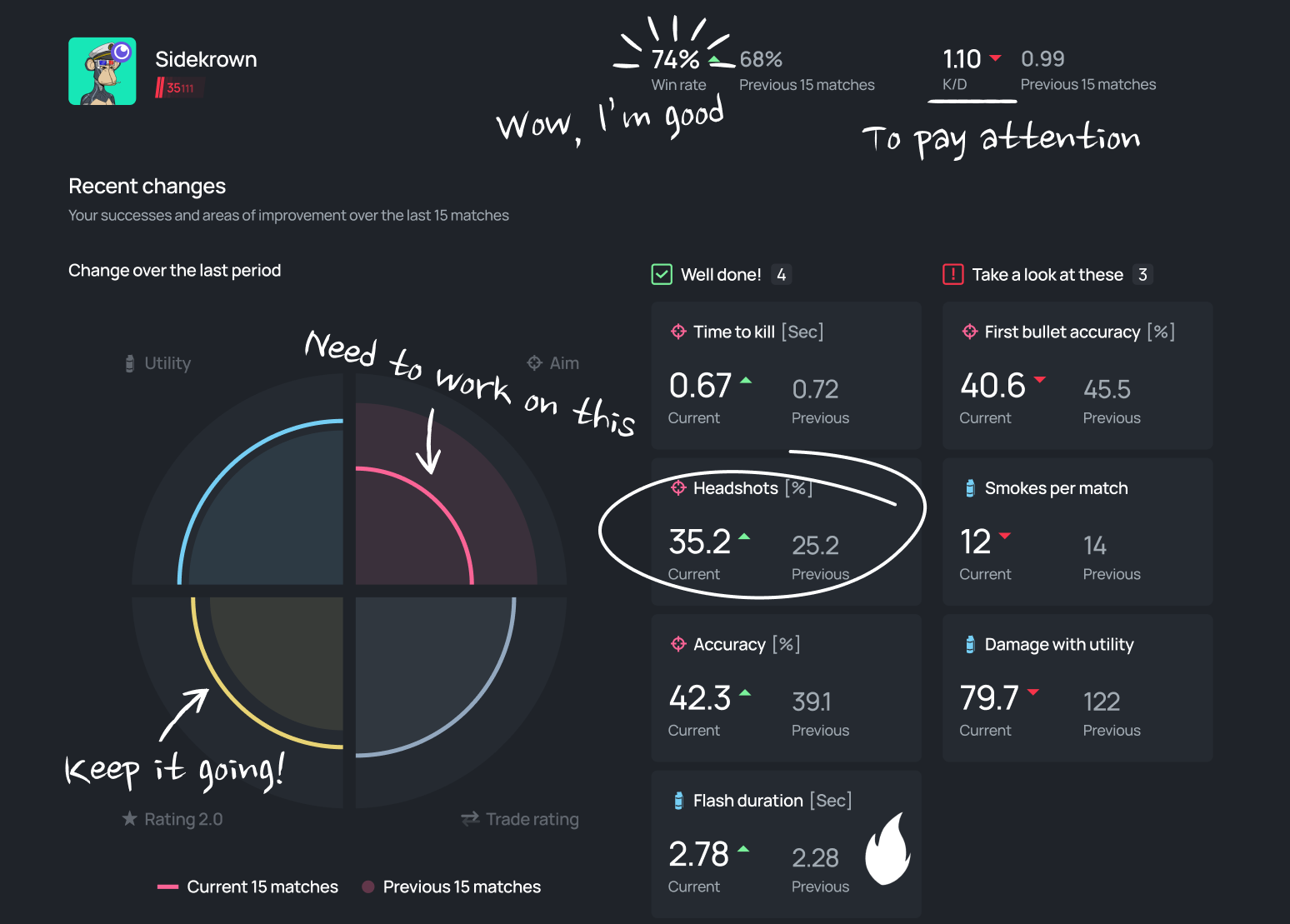
Dust 2 callouts
Probably the oldest map among all active duty maps. It’s more than 20 years old already, and it has remained almost unchanged all this time. The main positions here are A and B plants, mid, catwalk, CT, long and tunnels. That should suffice to be able to give your teammates enemy’s general location.
If you want to be precise with your callouts, learning all positions on mid, all covers on B and some positions on long will go a long way to help your teammates work with information you provide. In time you’ll learn all the map as it is one of the easiest for even a new player to remember.
Inferno callouts
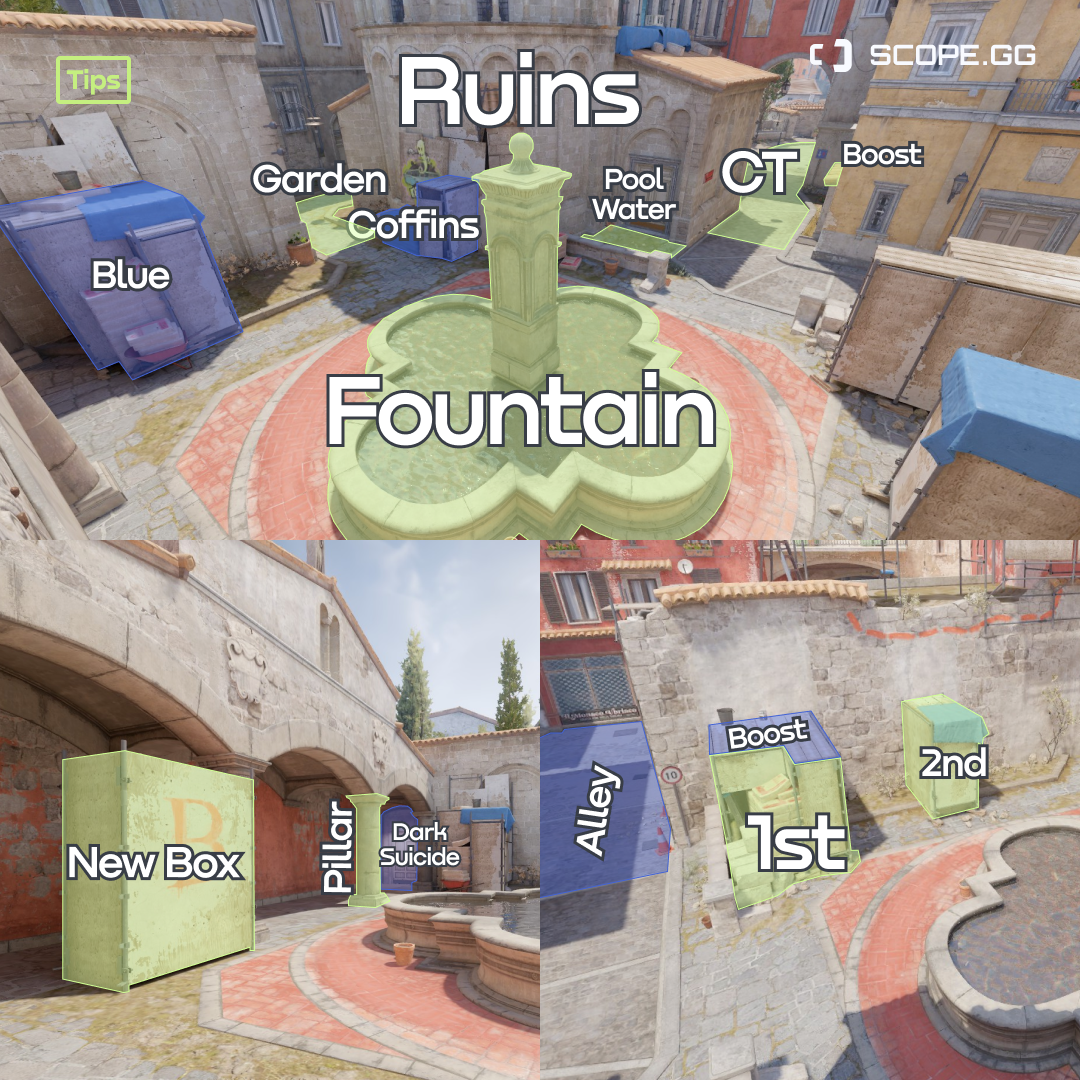
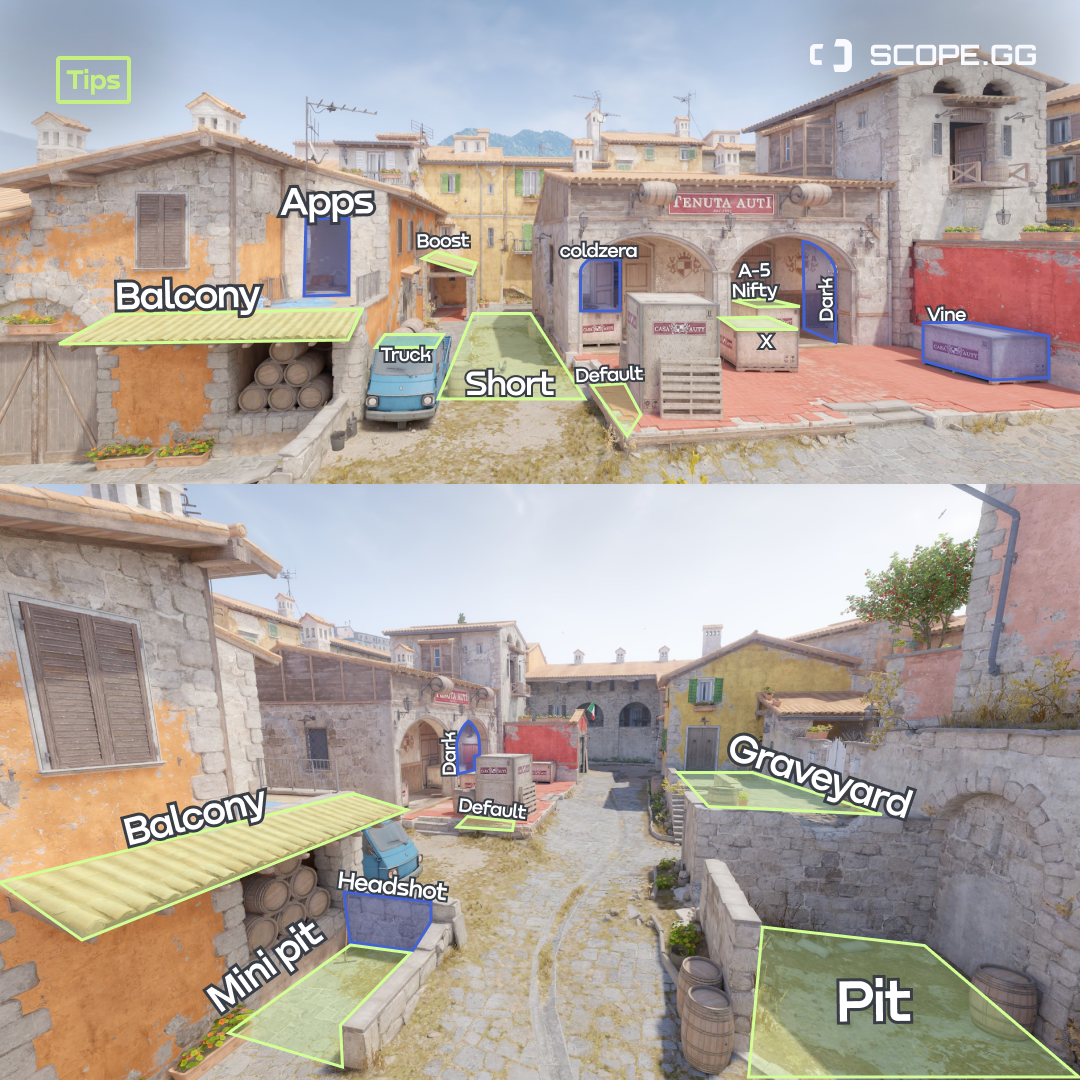
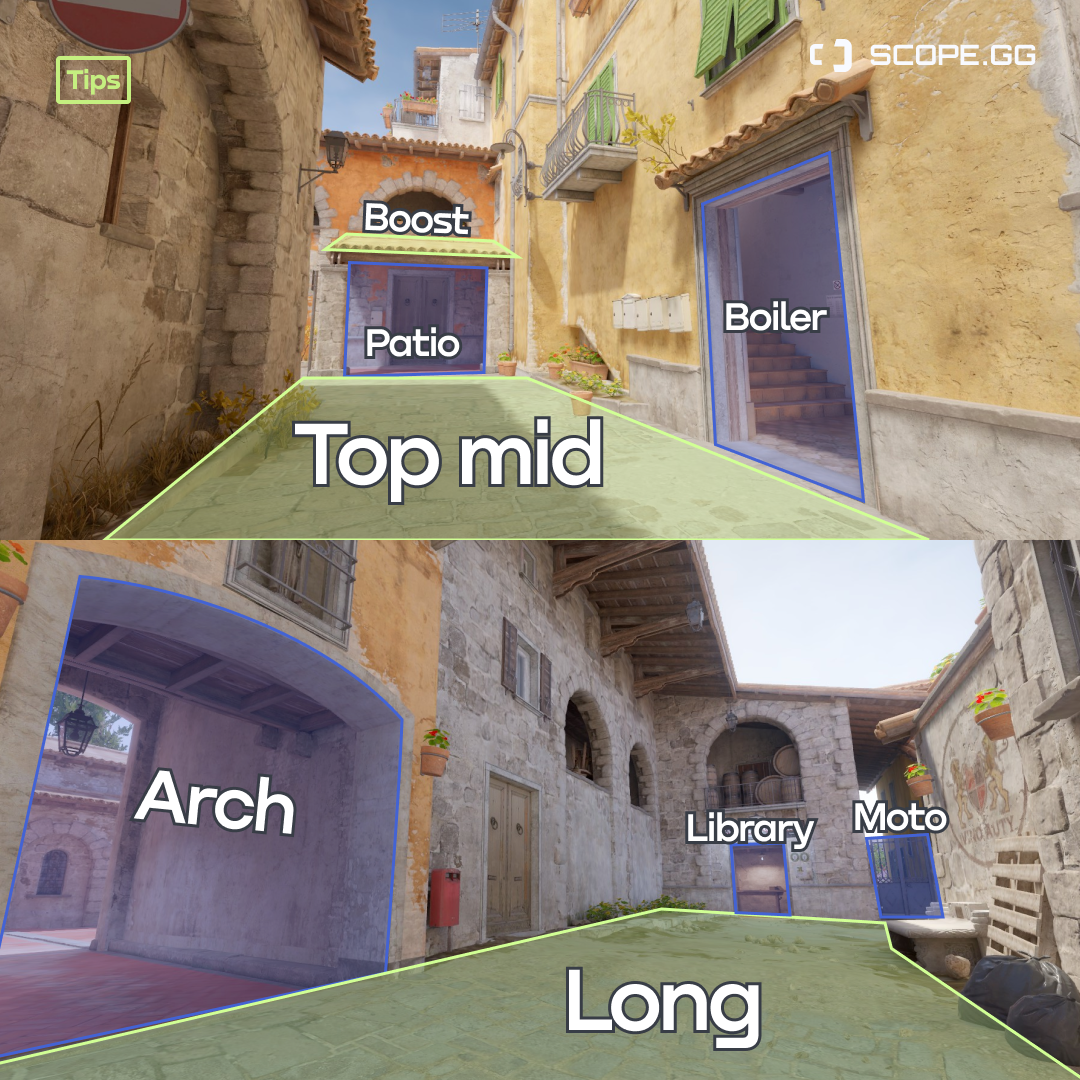
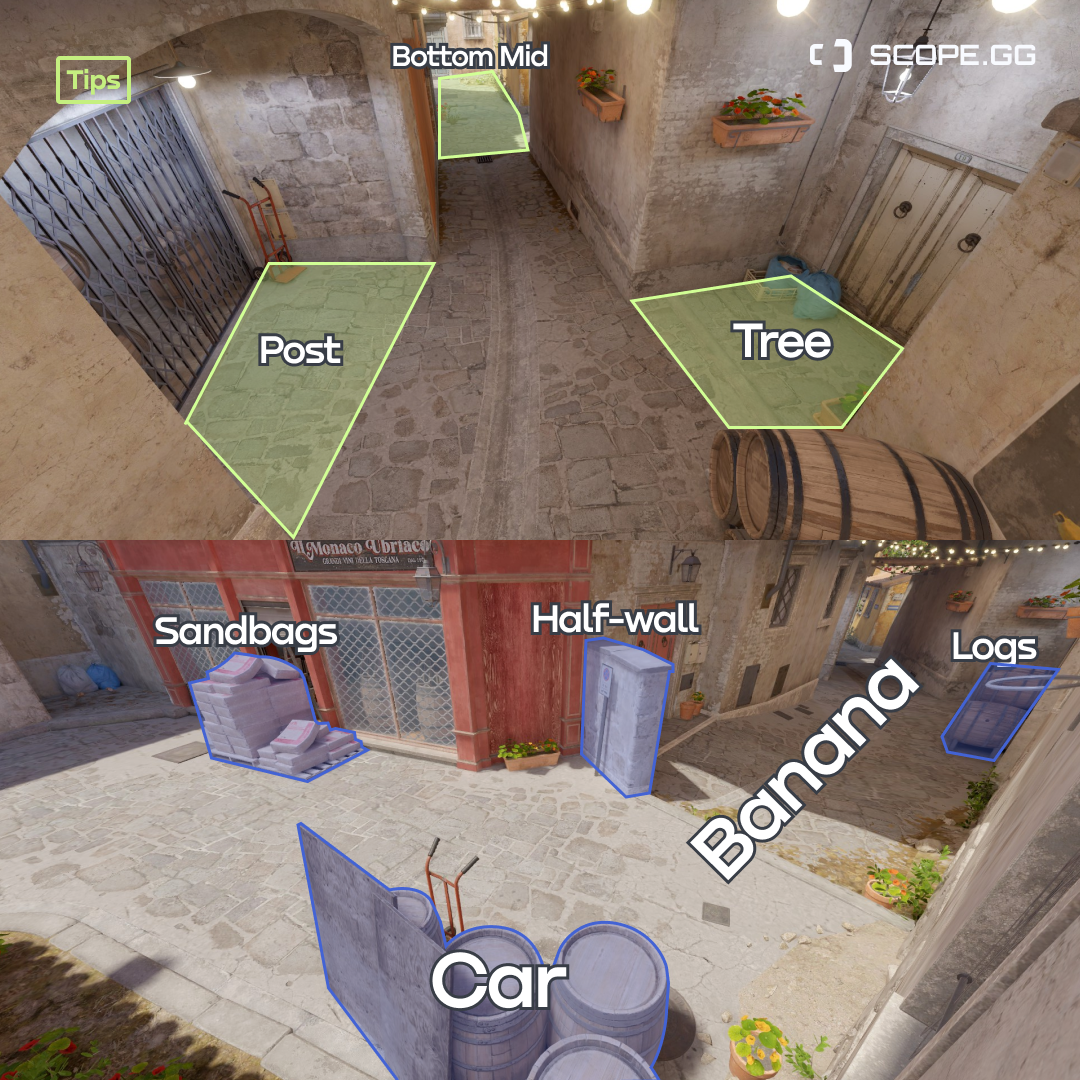
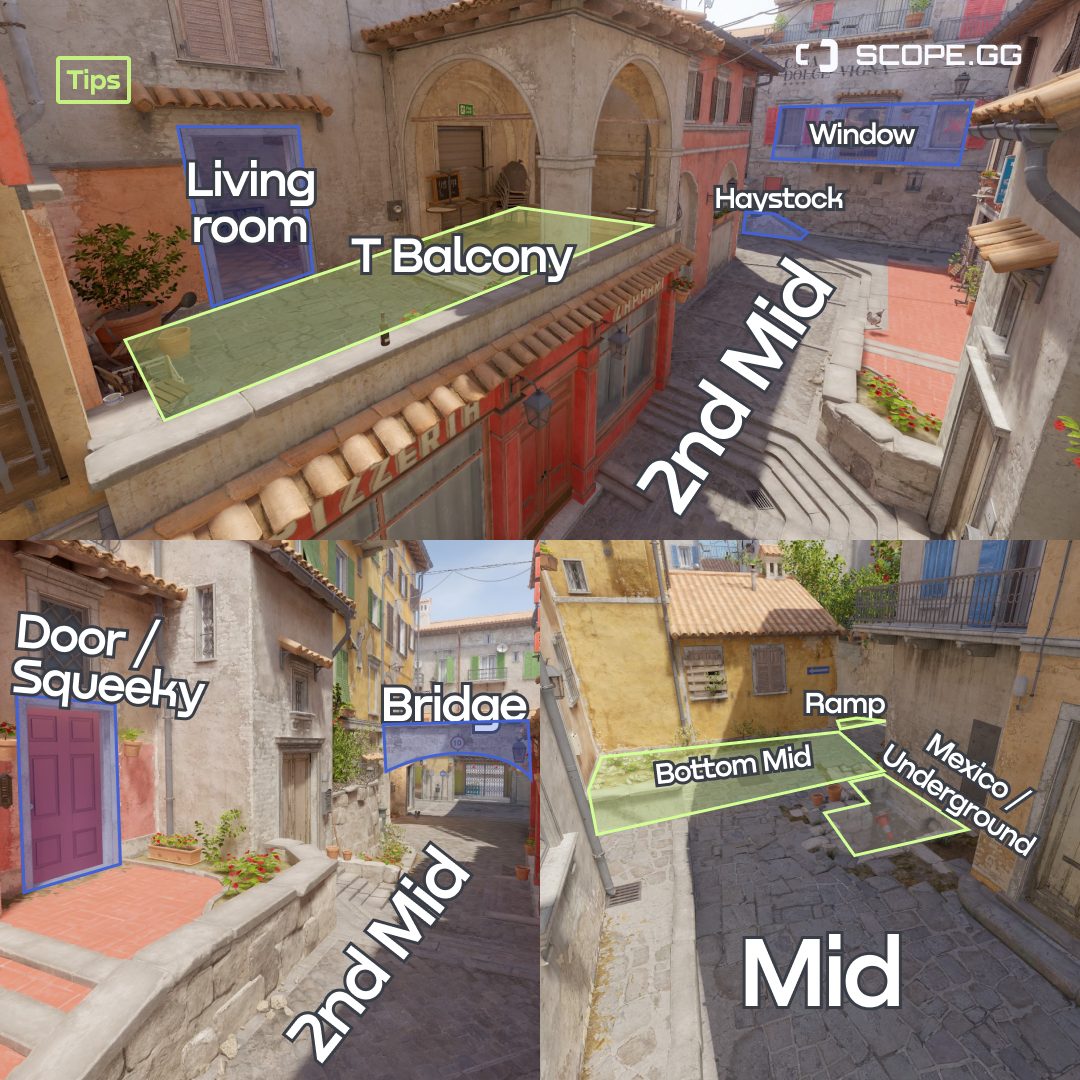
Inferno is one of the maps that was remade several times since CS:GO launch. And it became even more popular after the release of CS2. Map creators added lots of details but its general layout remained the same.
For a successful play on Inferno you need to take control of banana, apps and both mids. Team that has control over the bigger part of a map has an advantage during both attack and defence. By the way, that’s the only map with a second mid, the perfect way to get to a necessary position with almost no risk.
What you definitely need to know is all positions on B, main positions on A, mid and apps. As you can see, it’s not hard at all, but knowledge of those callouts will significantly improve your win rate on Inferno.
Increase your rank, win rate, and KDA in CS2

Nuke callouts
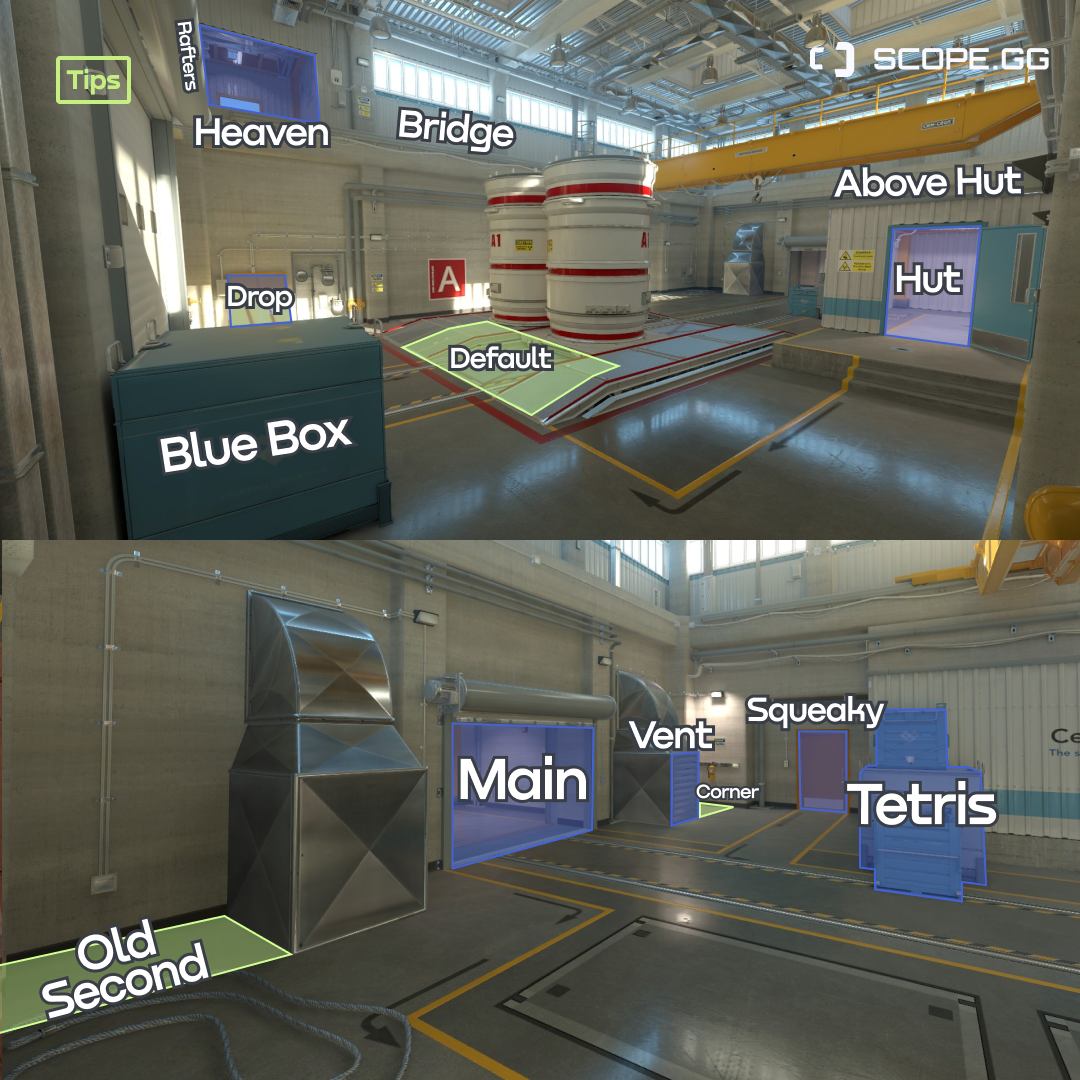
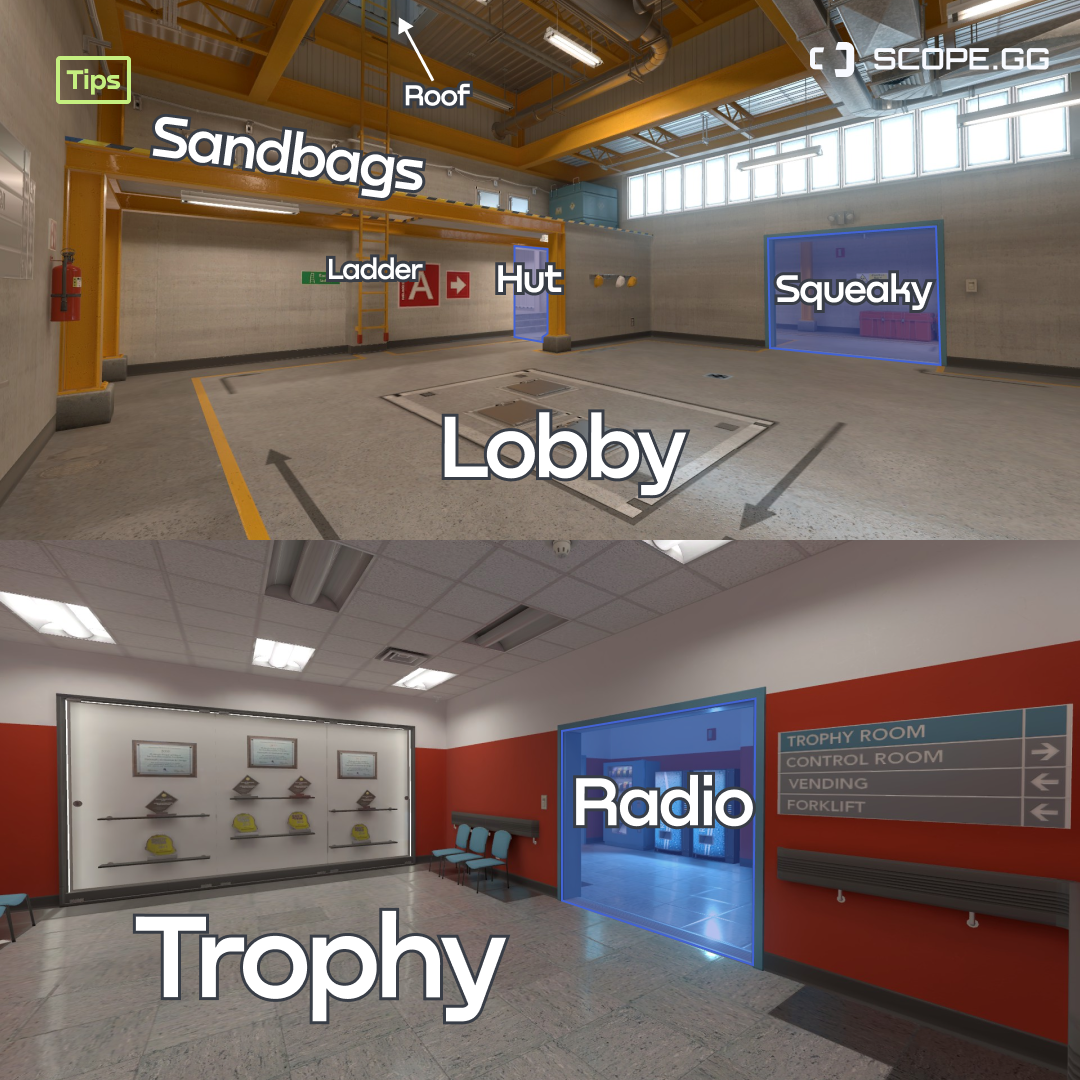
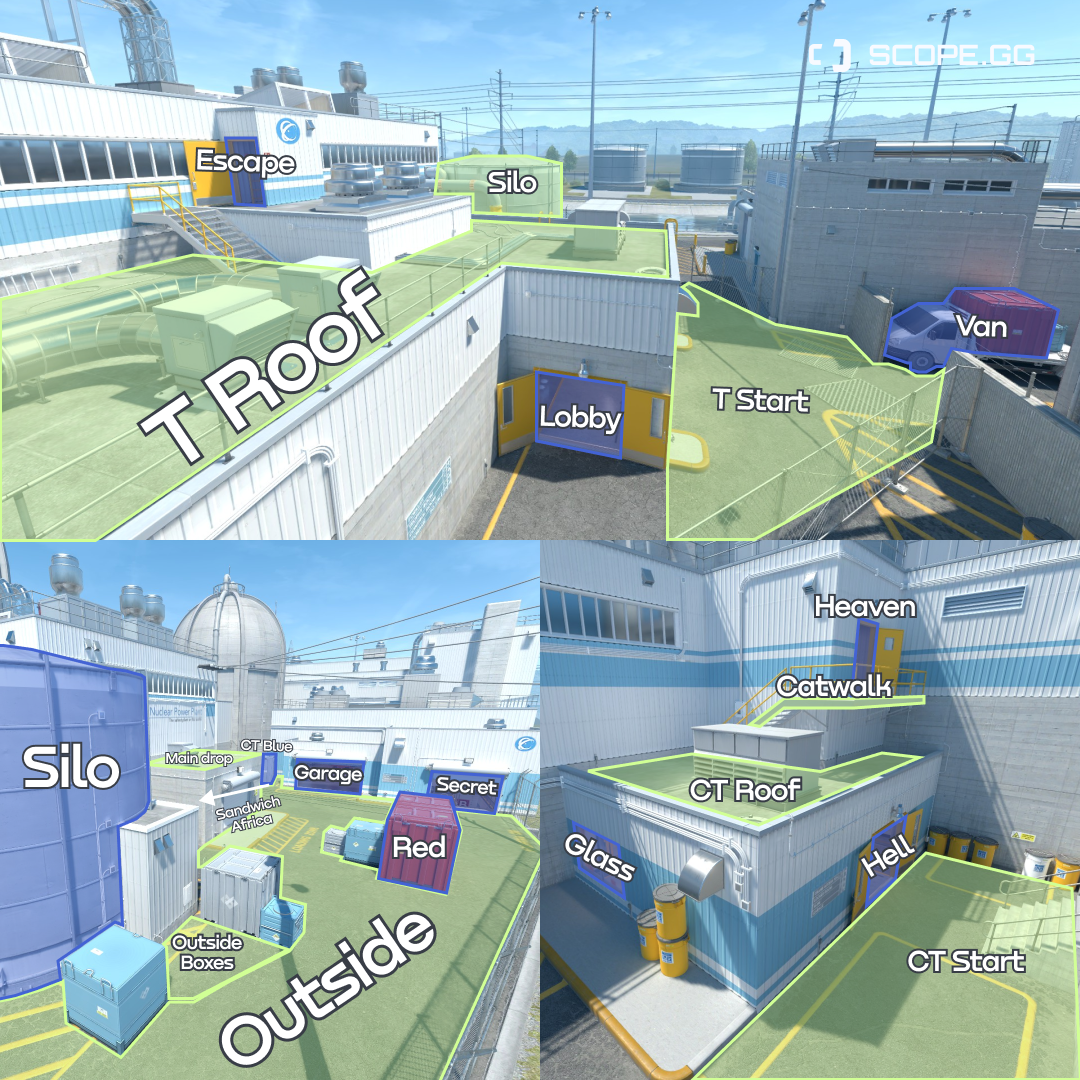
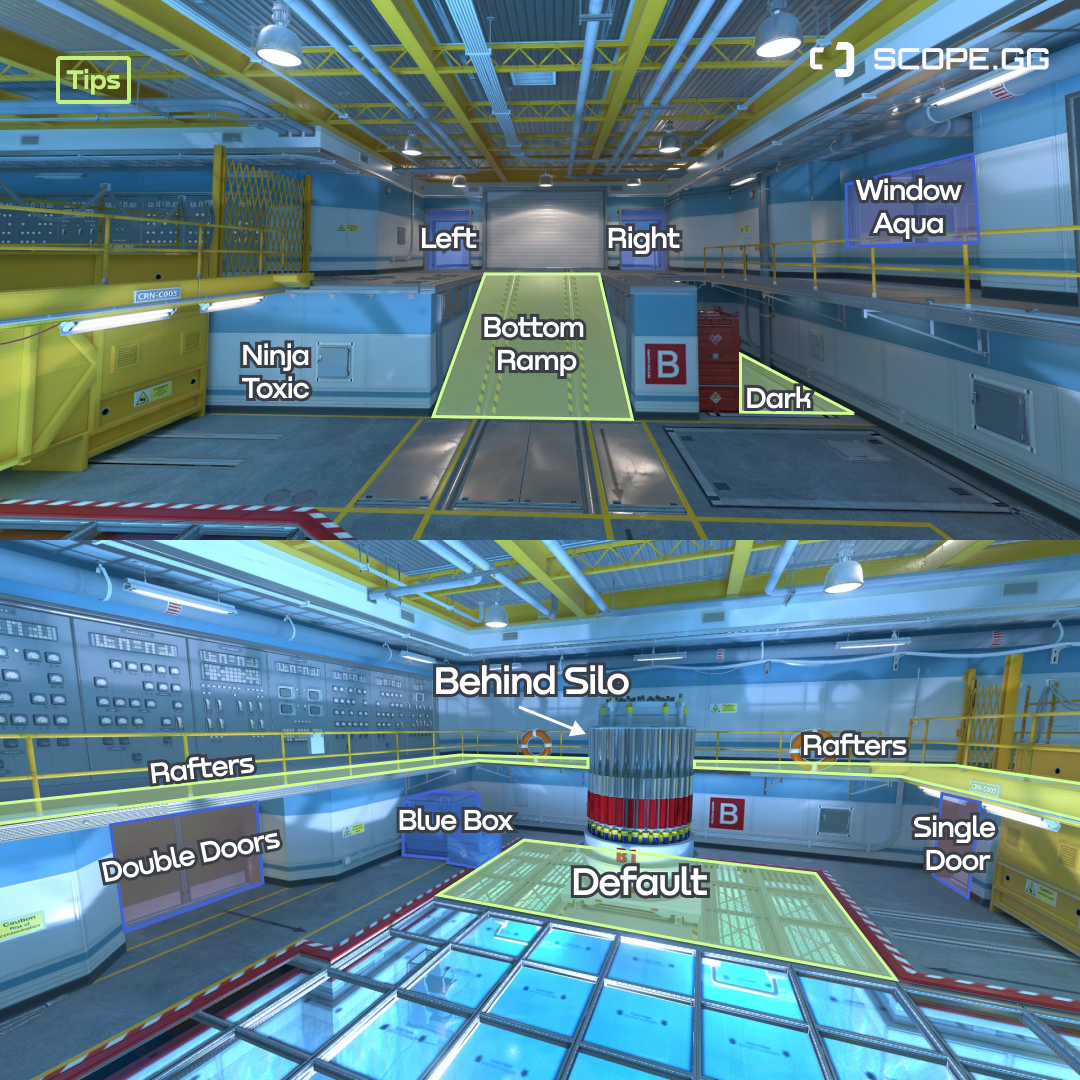
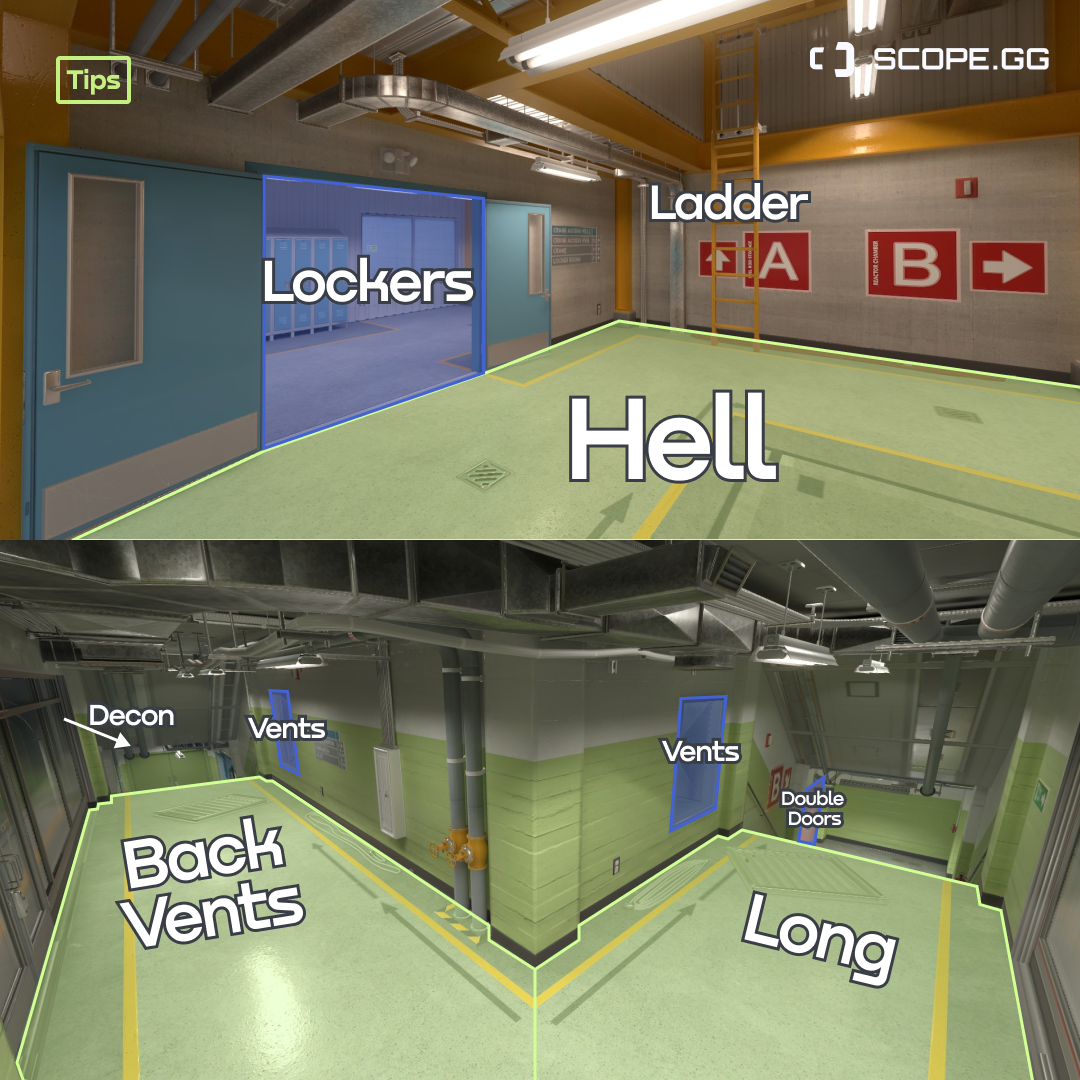
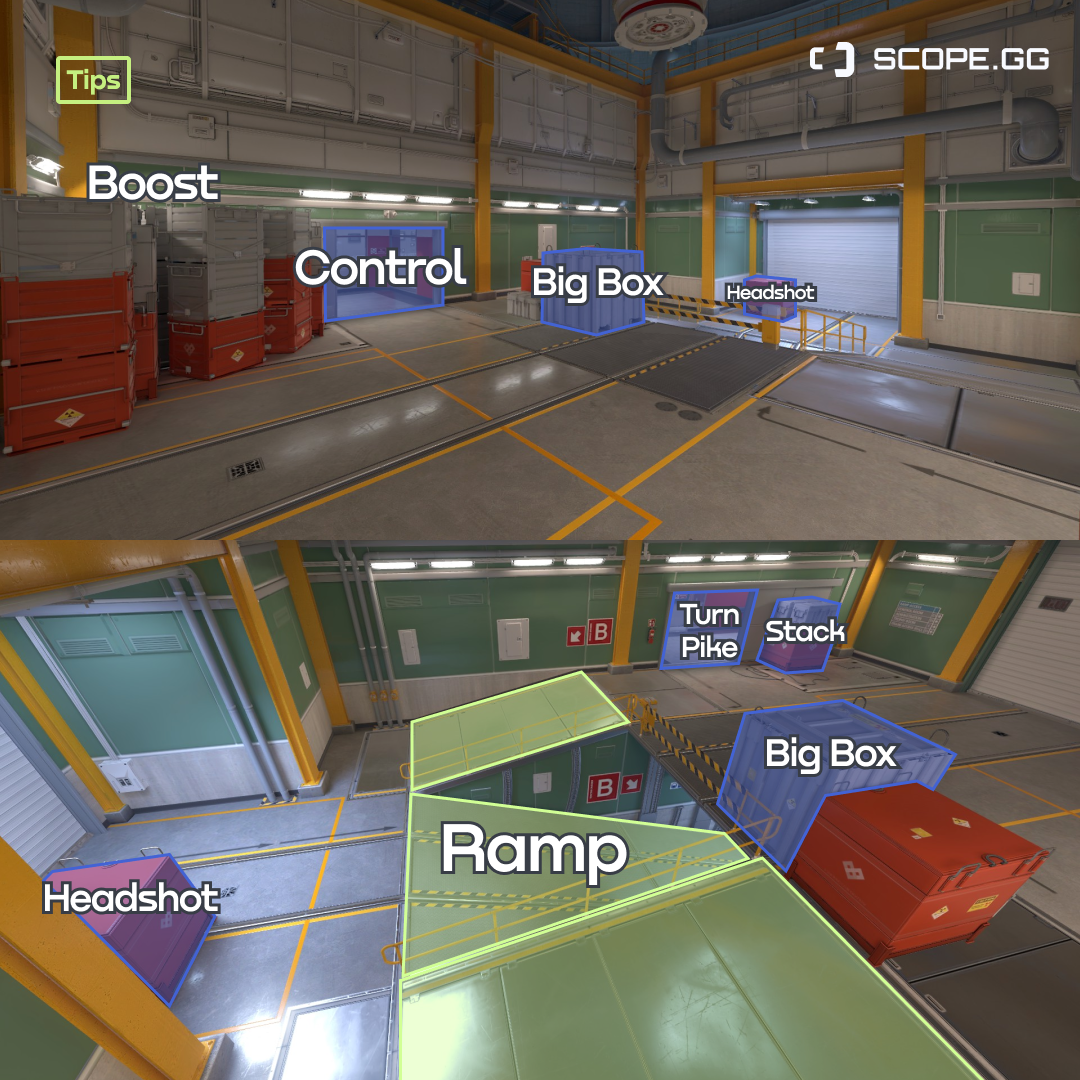
This map may seem hard at the first glance due to it being multi-leveled, but in practice learning it is as easy as learning an alphabet. What may be hard at first is using the sound to understand where action is happening.
The key positions are the outside (silo), lobby, ramp, garage, secret and A and B plants. This map doesn’t have a lot of tricky barrels or boxes for hiding, so learning Nuke should be much easier than the other maps. Just remember all the positions on A and B, on ramp, outside and in secret and you’re good to go!
Overpass callouts
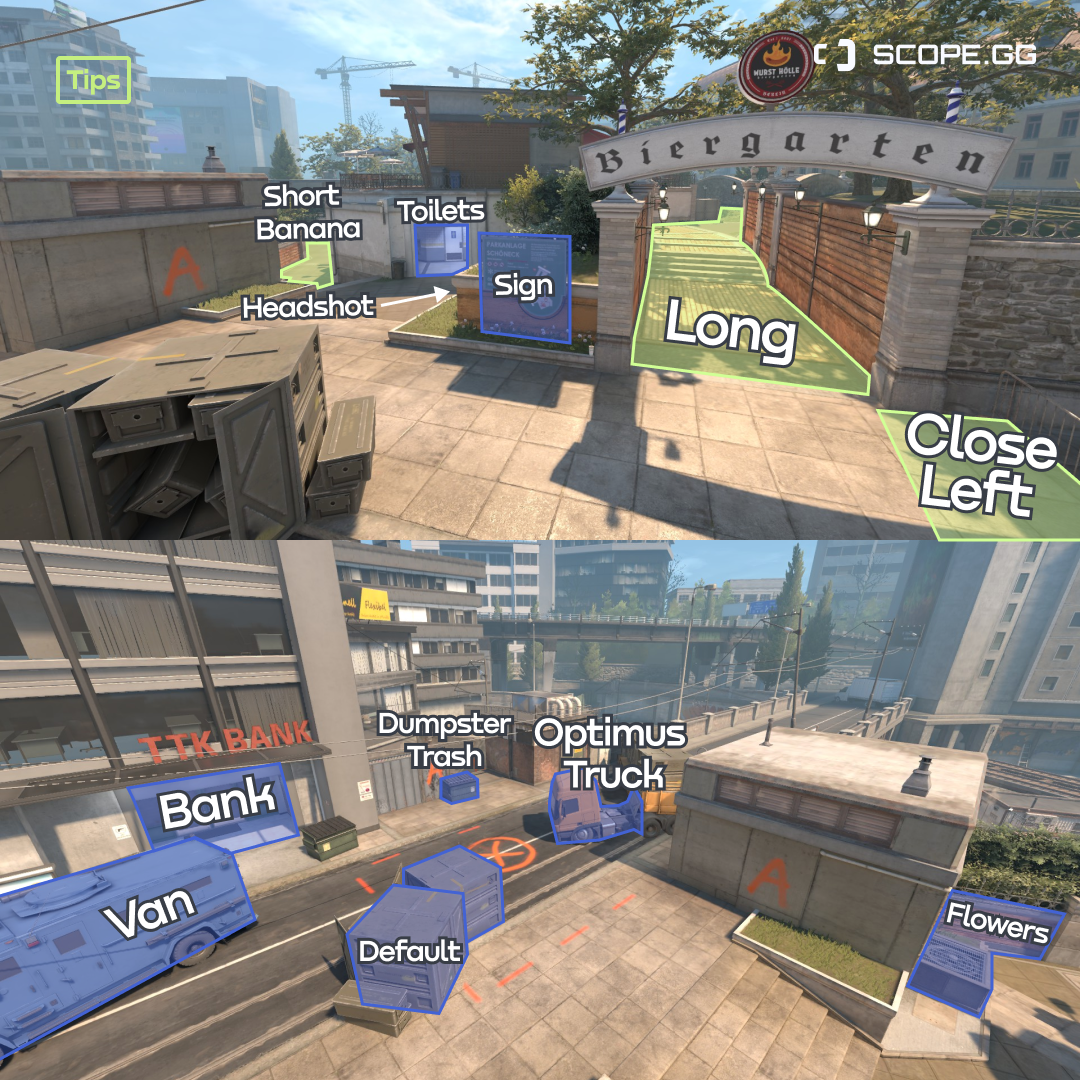
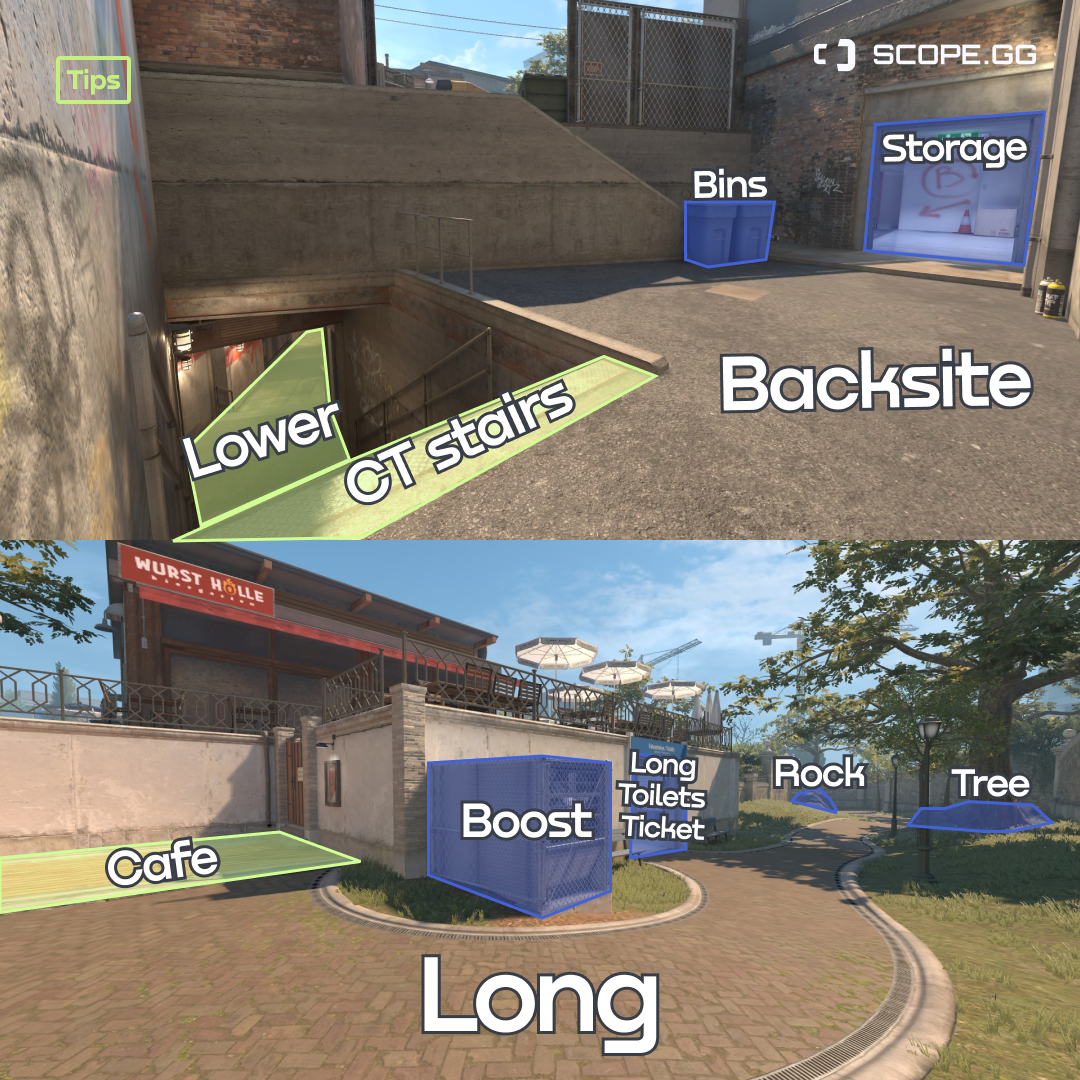
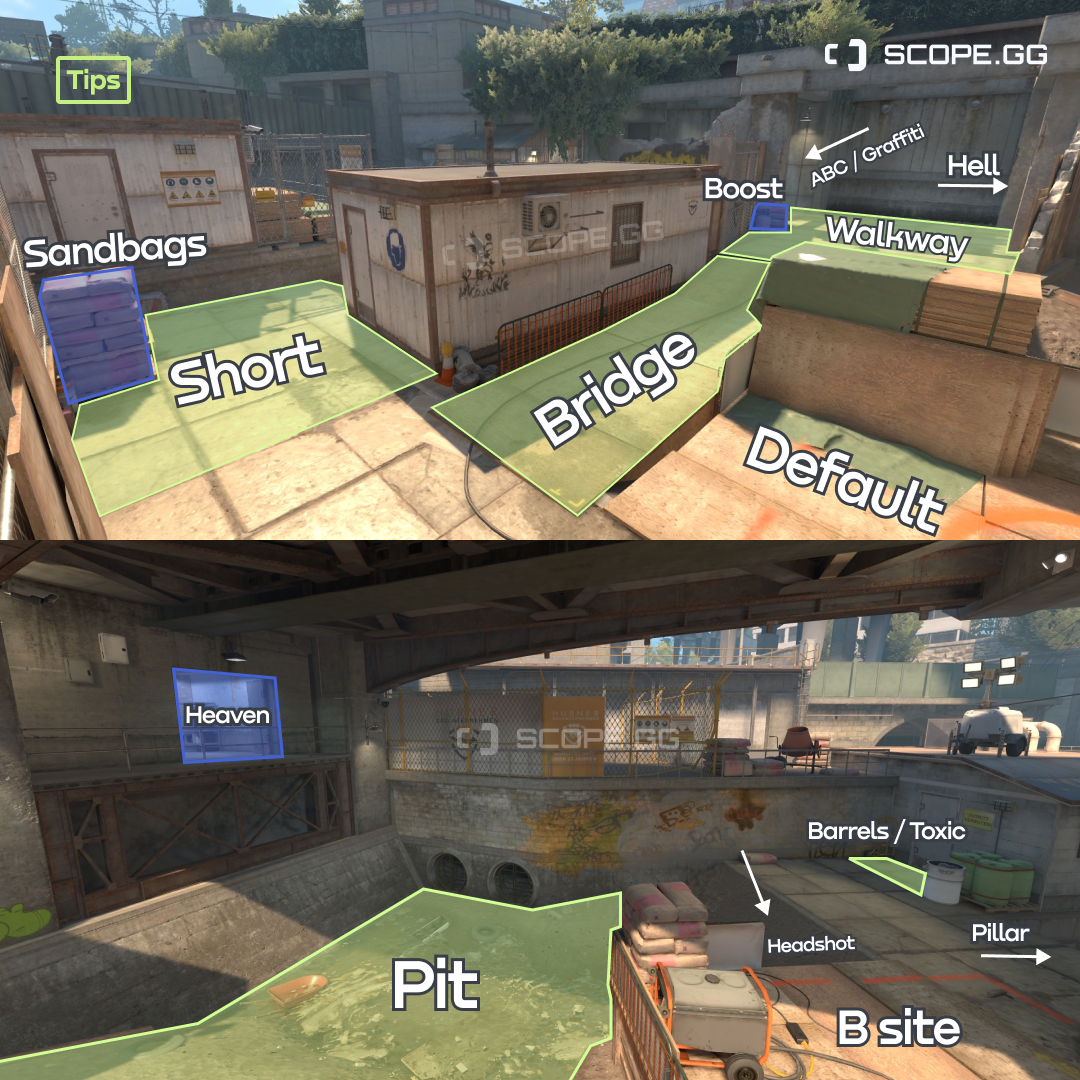
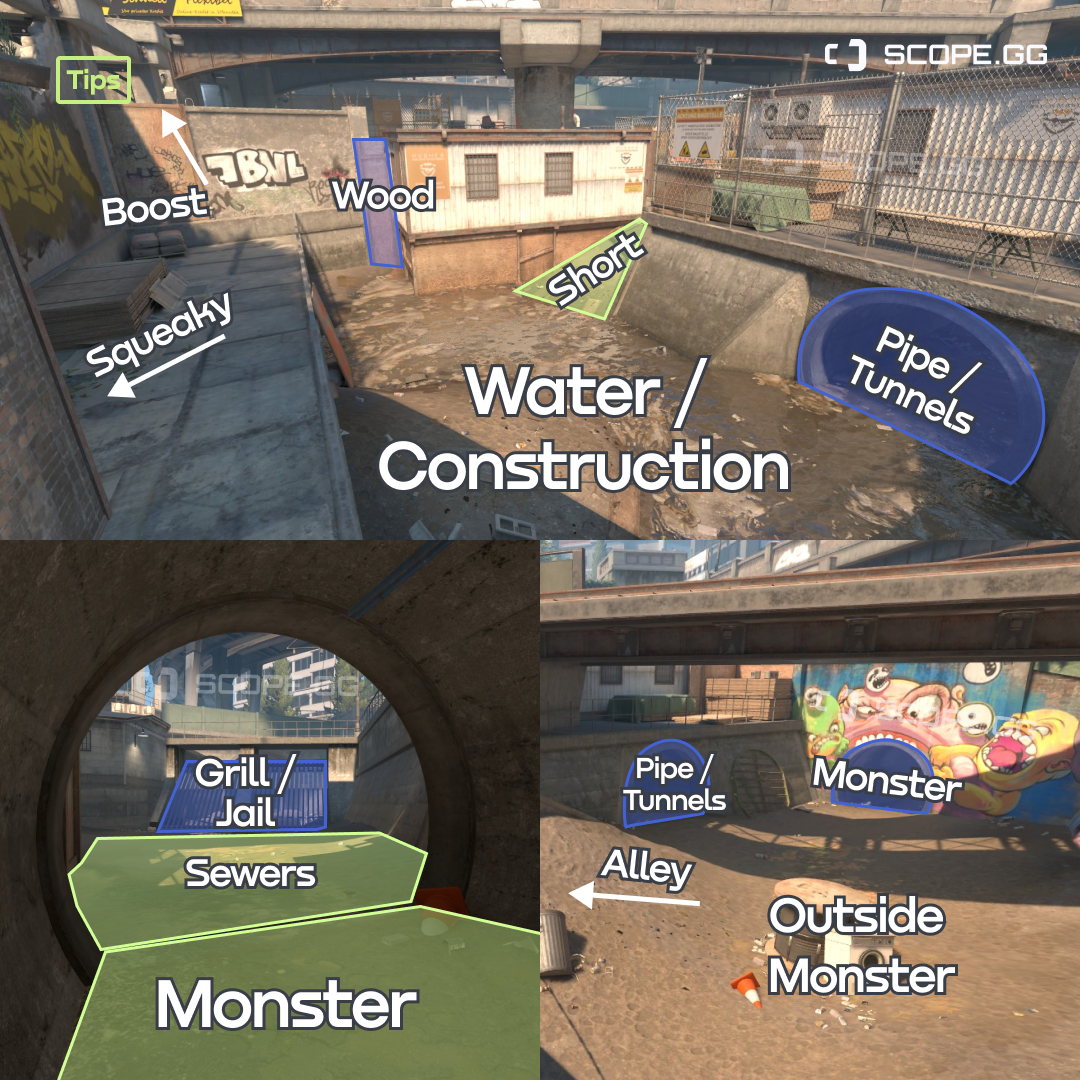
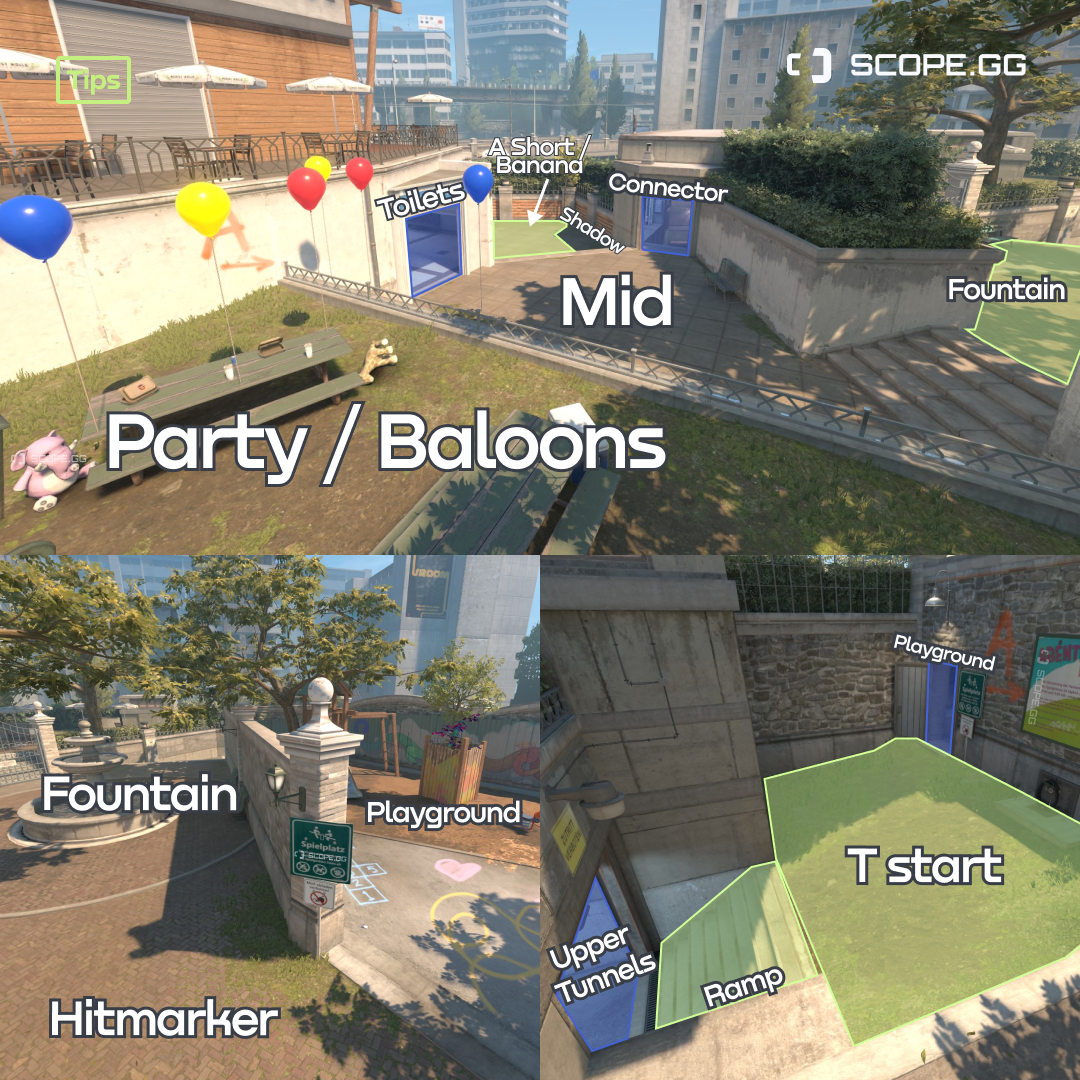
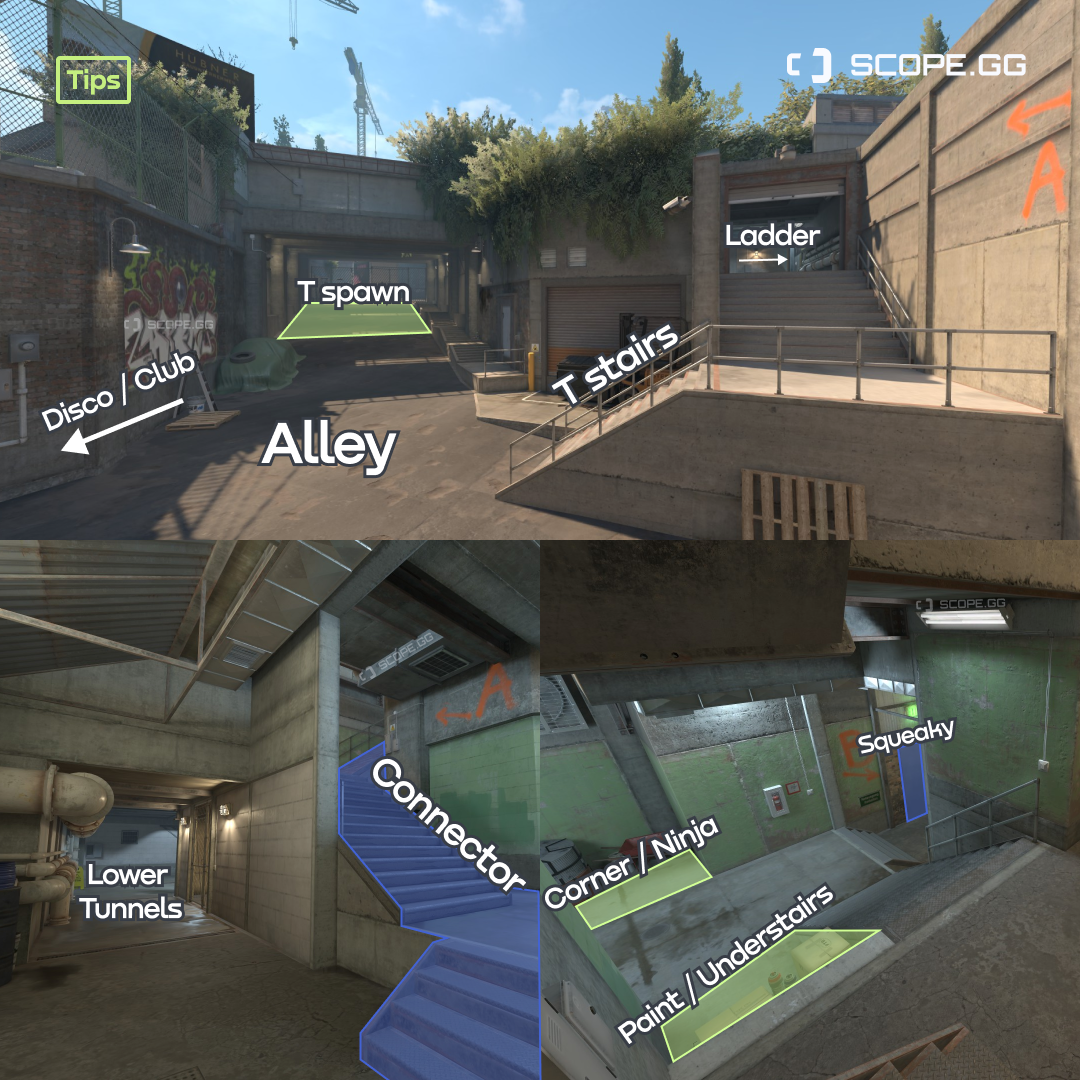
Overpass is a bit harder than previous maps. This map is pretty confusing for the new players, but at the same time it’s unusual structure allows for easy fake smokes and cool executions.
CT spawn also being A plant makes holding onto this point quite easy for a defending team. B plant is also easily accessible for the defenders, so creators of this map made way for a lot of really cool grenade executions. By the way, you can see and learn those using SCOPE.GG Grenade prediction: a tool that helps you easily find all important grenades on ALL COMPETITIVE MAPS for free. Try it here:

For a successful map control on Overpass your team would need to take control of a short, long, banana and connector. As an attacking team your should also apply pressure around B plant.
Vertigo callouts
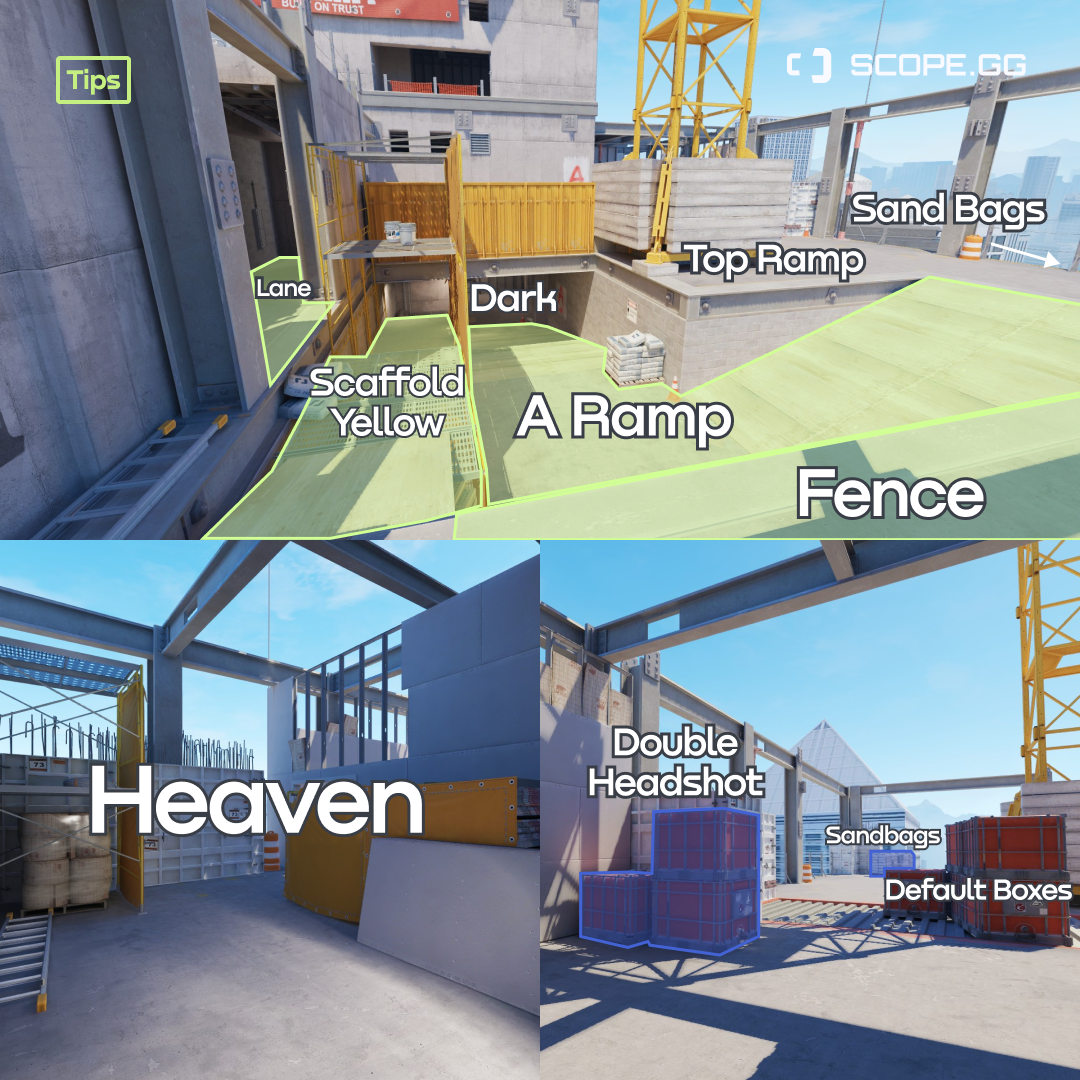
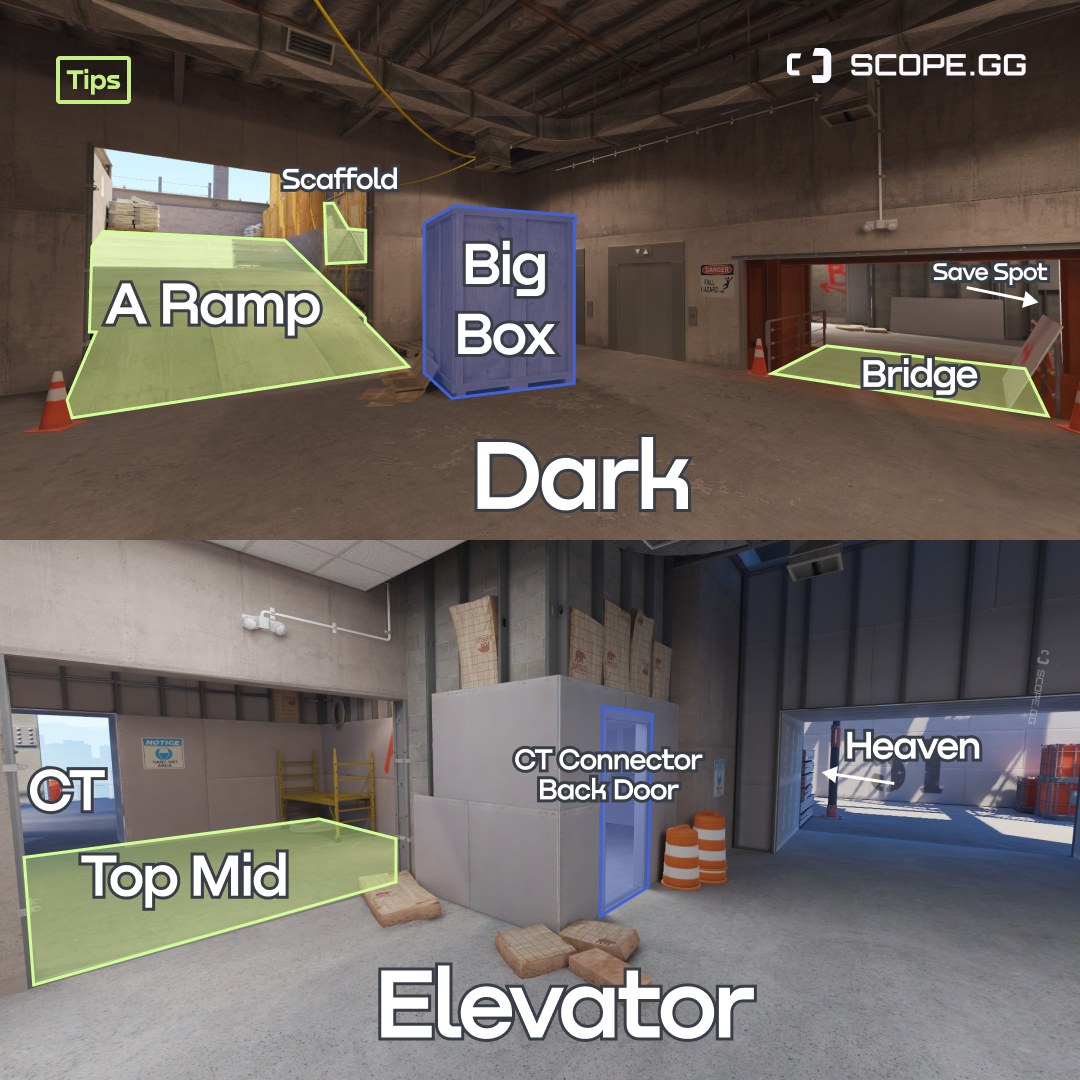
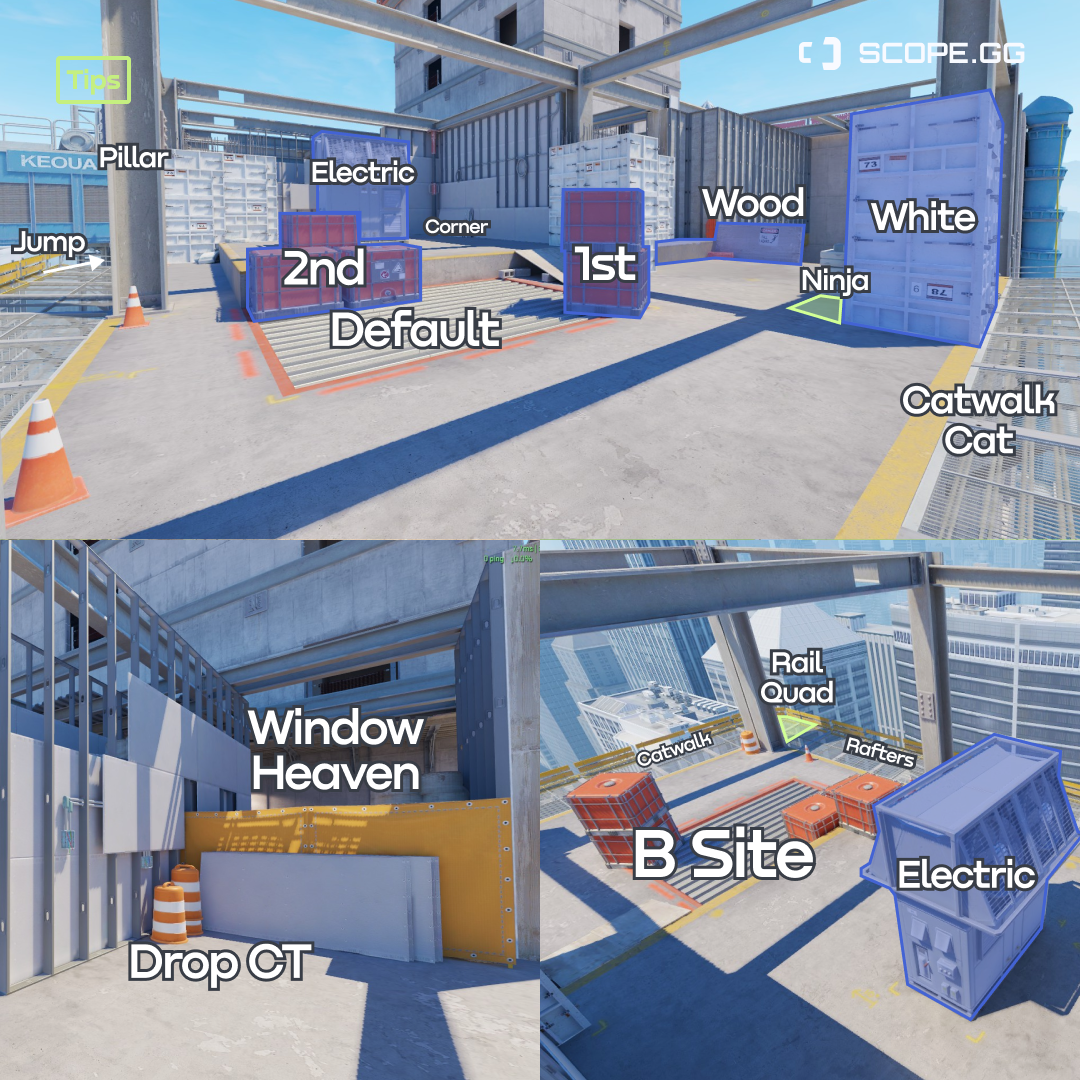
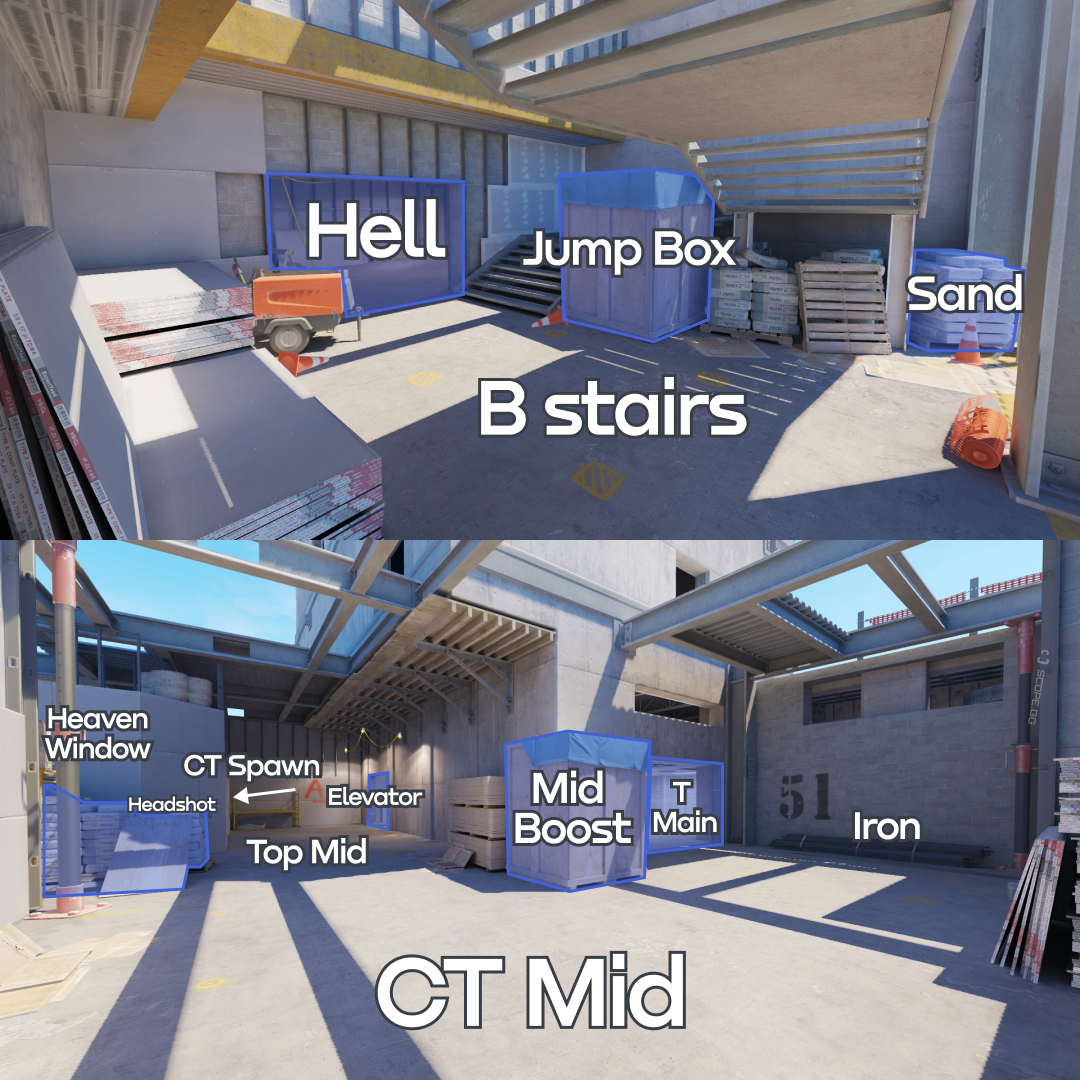
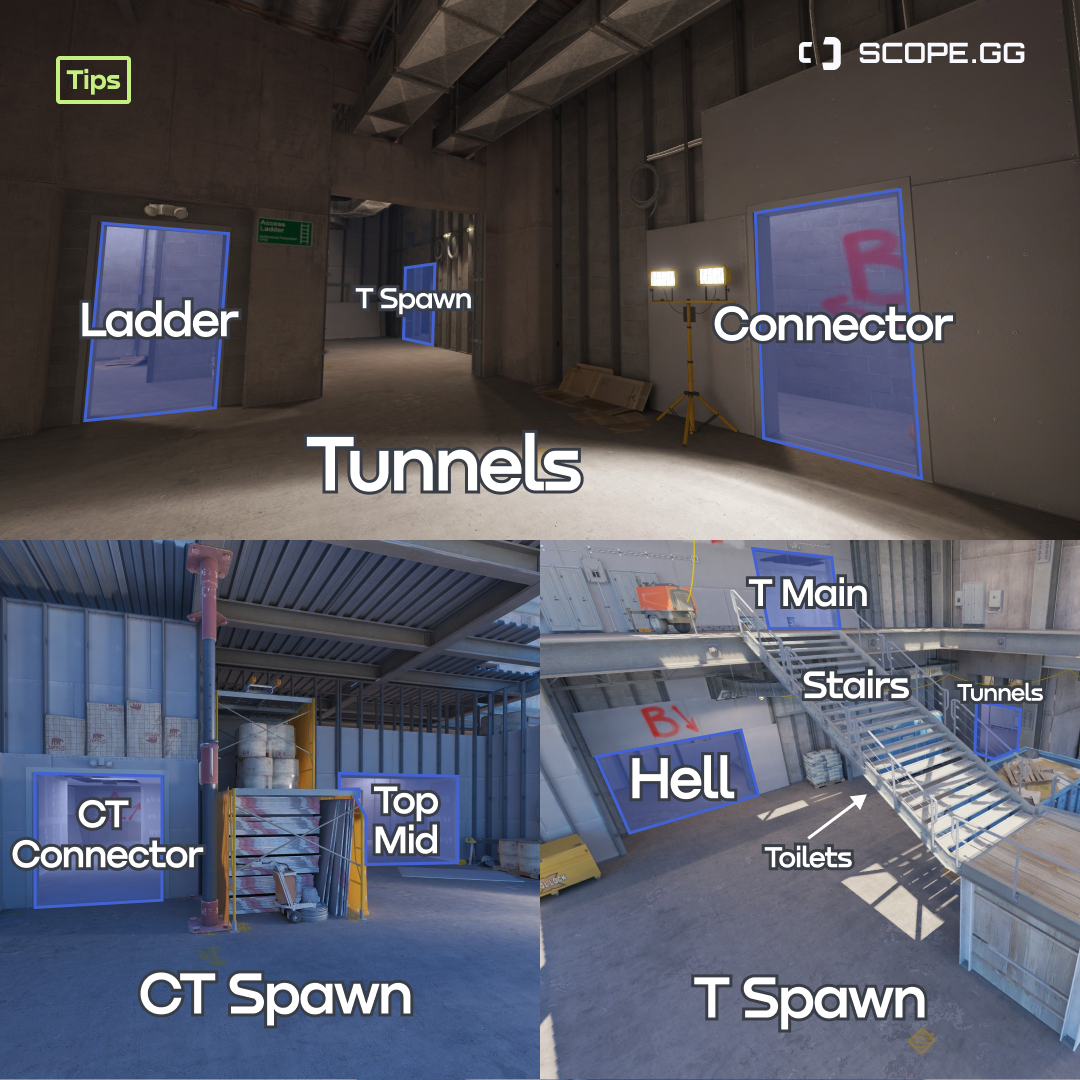
Even though Vertigo was added to active duty maps a couple of years ago, it wasn’t well received by both casual and professional players. Like Nuke, Vertigo is a multi-leveled map but it’s much smaller in size. That’s to be expected, considering this map takes place on a skyscraper. You can hear your enemy’s movement all around the map, but that also applies to you, so moving with the Shift button pressed is advised.
Usually teams choose between really slow push or very quick rush as their tactics, you don’t have much choice in this matter on Vertigo. This map allows for quick transitions of a defence players, but they can be cut off with well-placed grenade executions.
What you need to know in terms of callouts are all the positions on both A and B plants and names for passages between them. That should be enough to be able to provide your teammates with required information. If you want to get better, you’ll have to memorise all callouts.
Ancient callouts
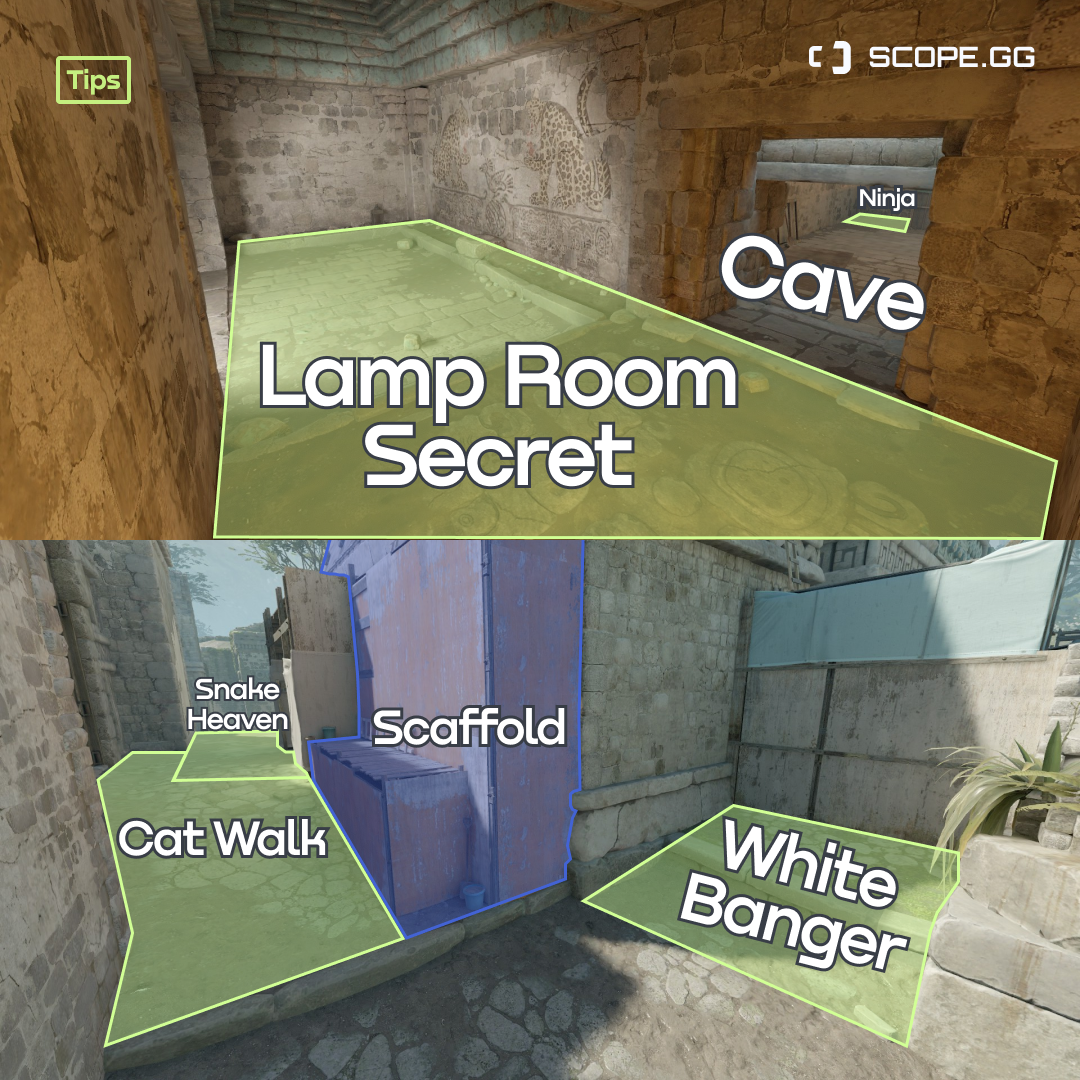
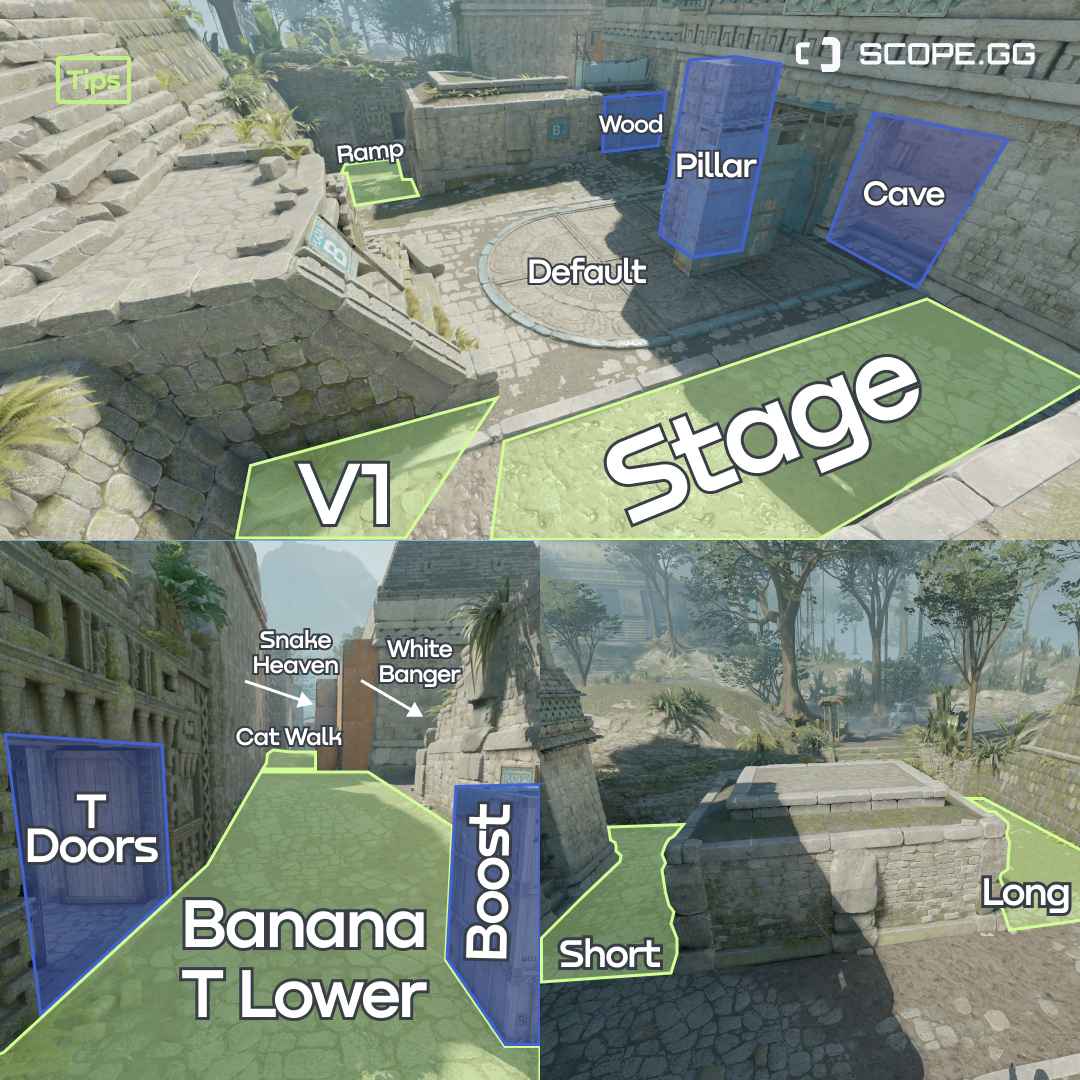
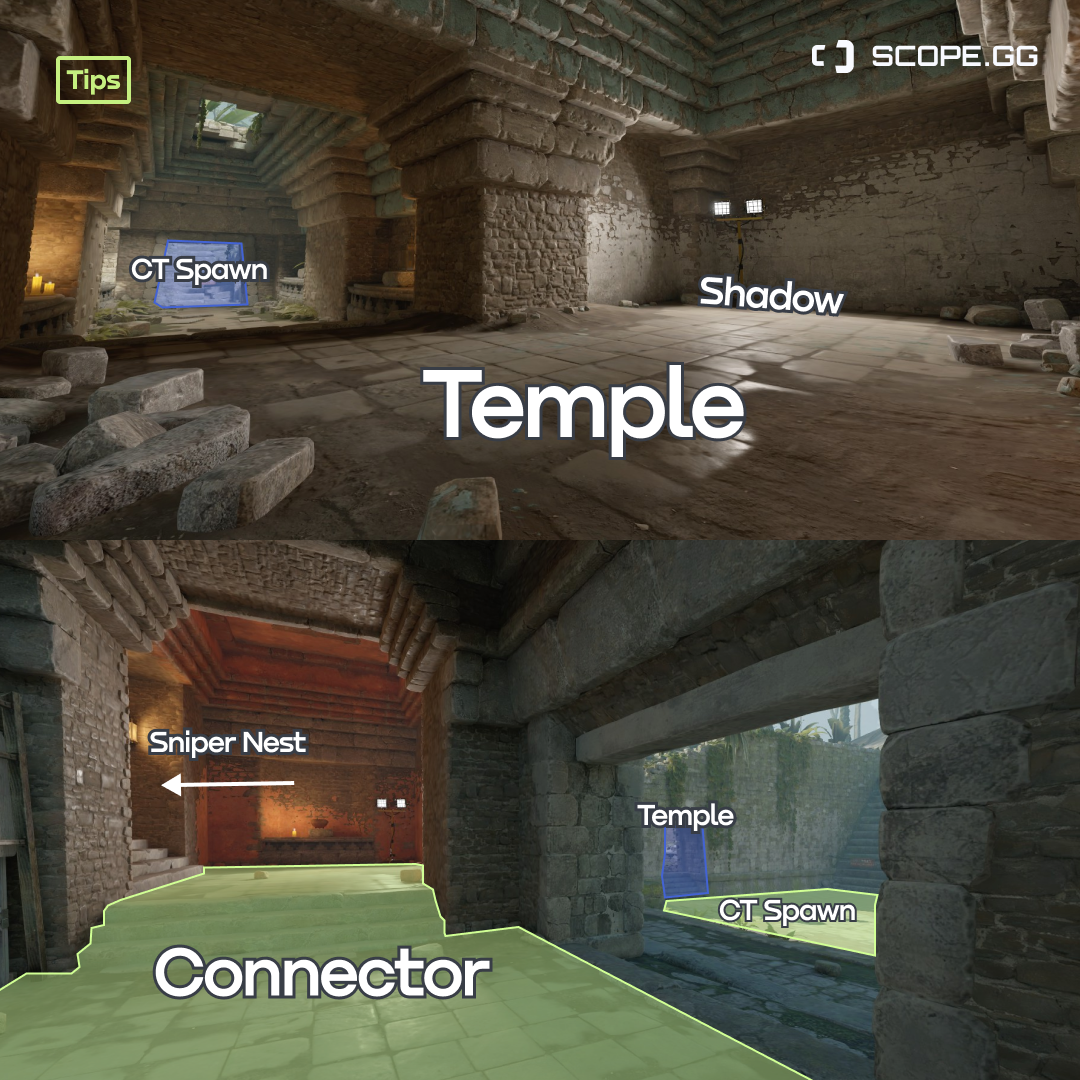
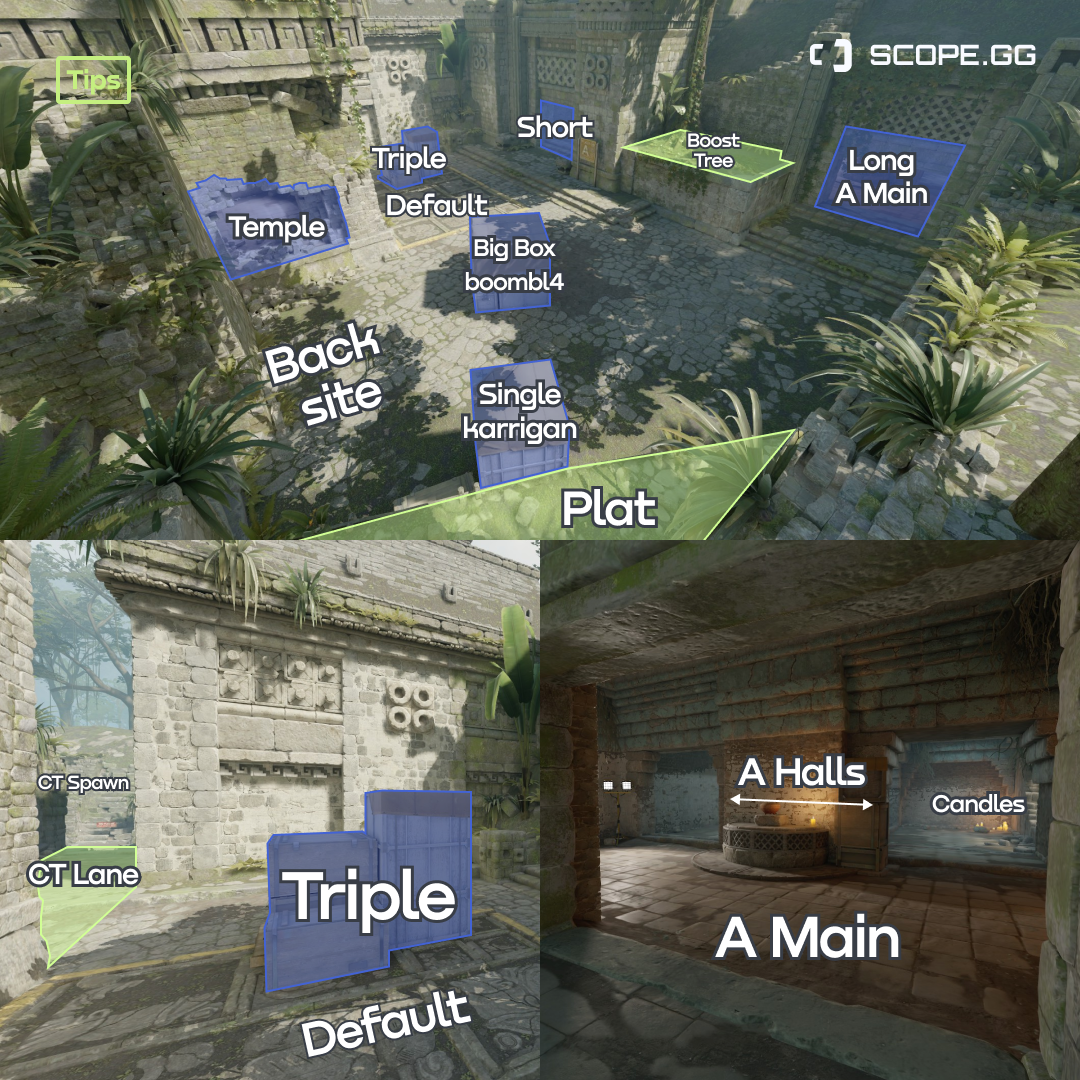
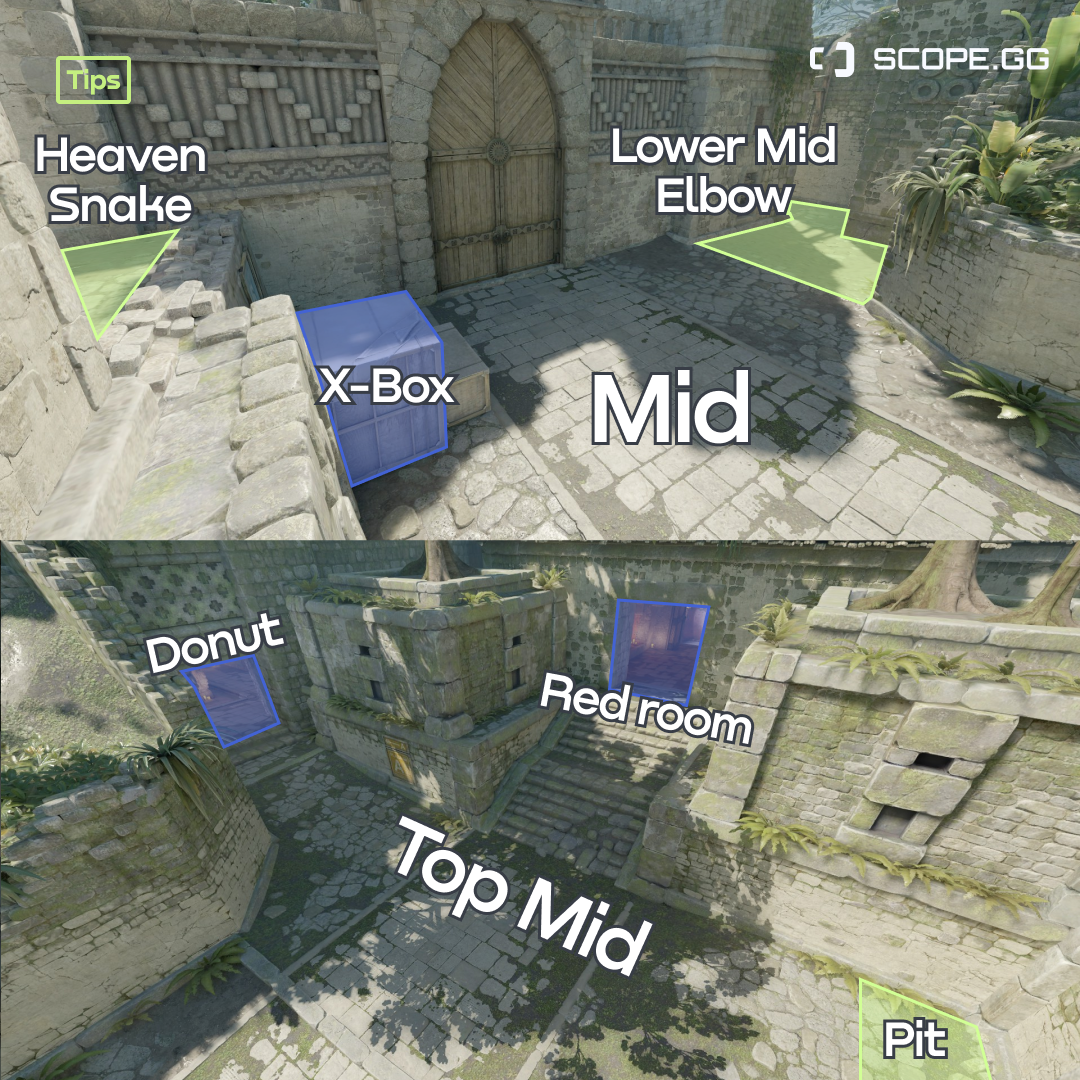
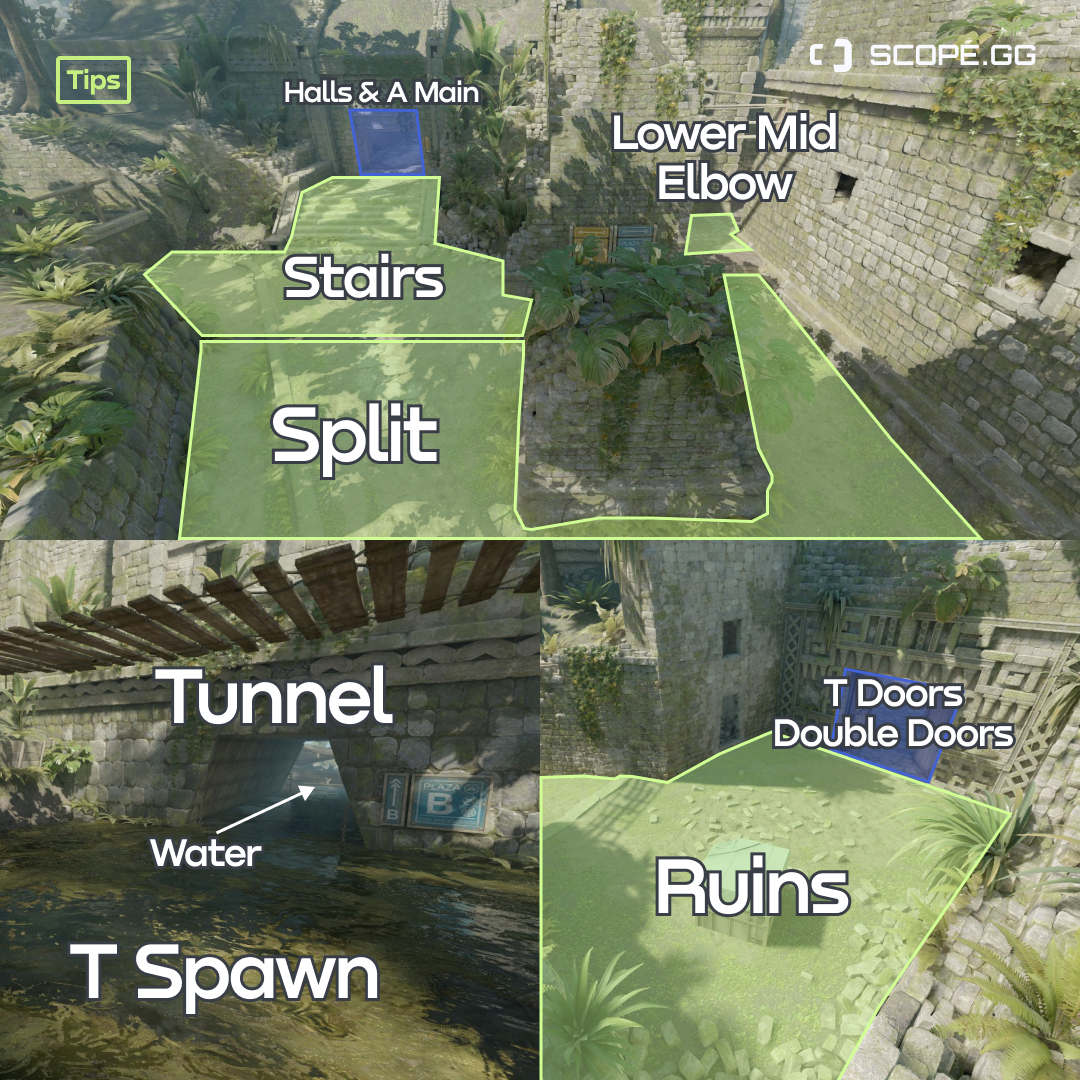
Even though many players are still learning the callouts on this old Aztec looks like, it’s not as complicated as it may seem.
Almost all of the action takes place on A and B plants and in the middle, so Ancient is pretty much the same as any other single-leveled map. Just learning callouts on both A and B plants and on the middle should suffice at the start, so it should be even easier than Inferno, but as usual, knowing names for every position on a map is what you should aim for.
Anubis callouts
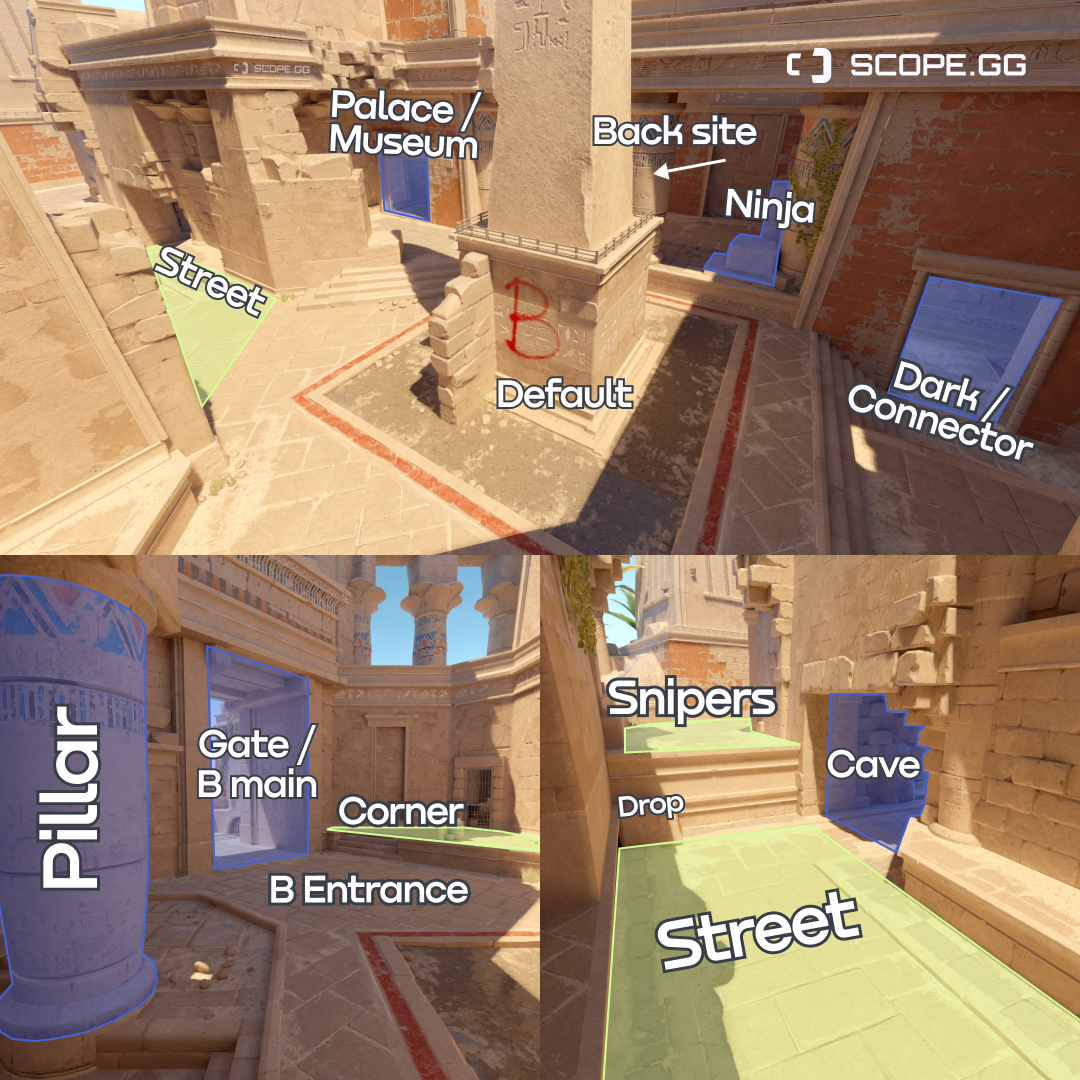
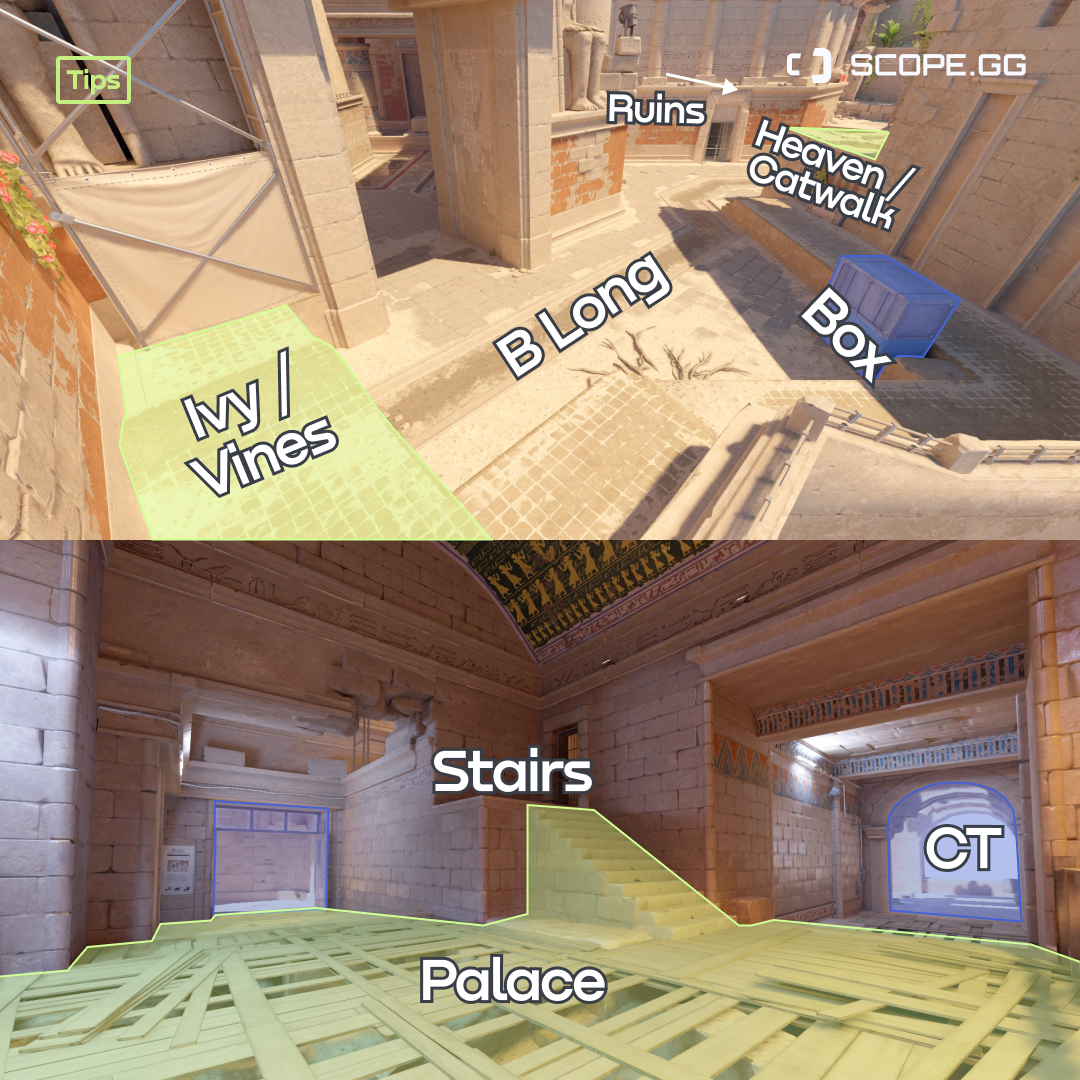
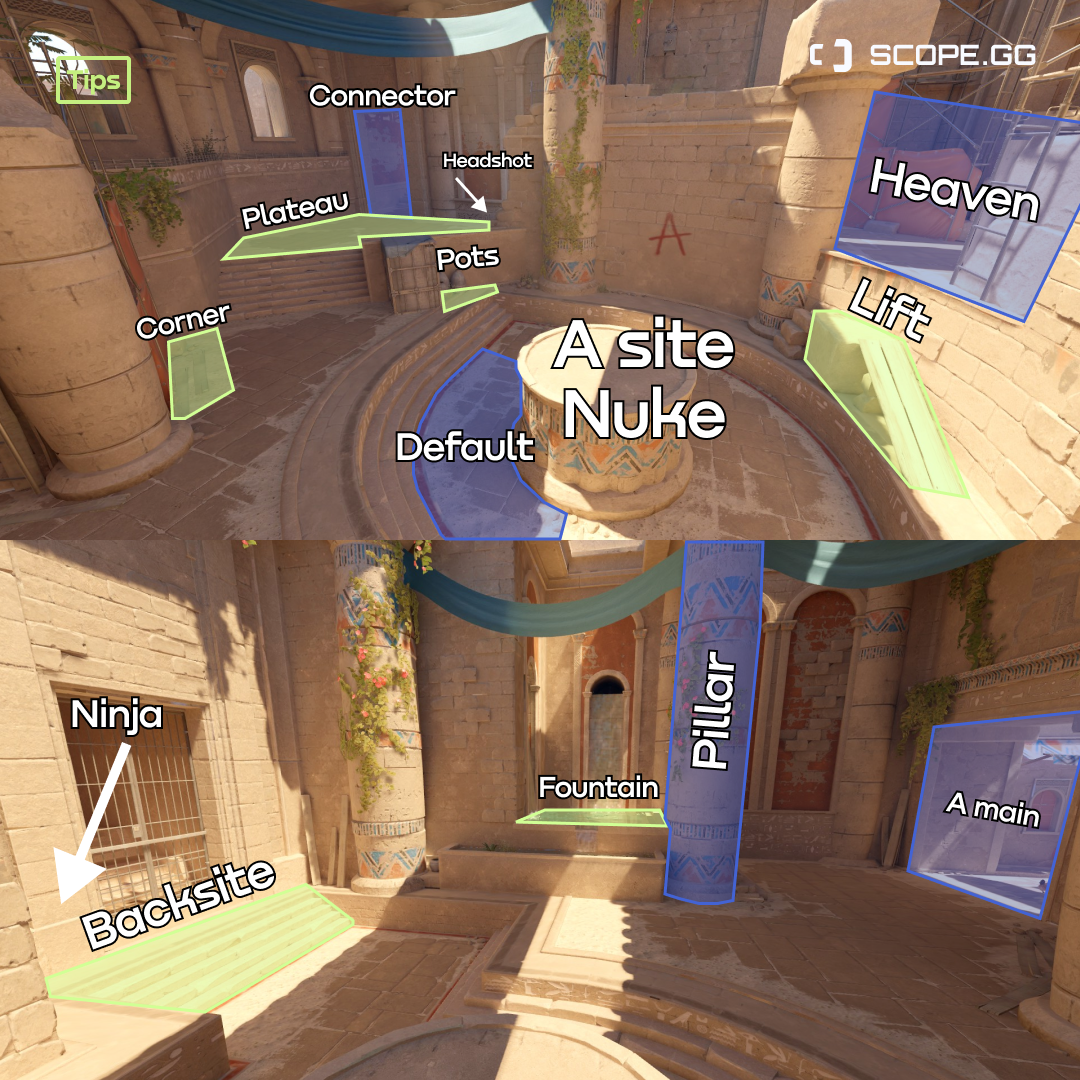
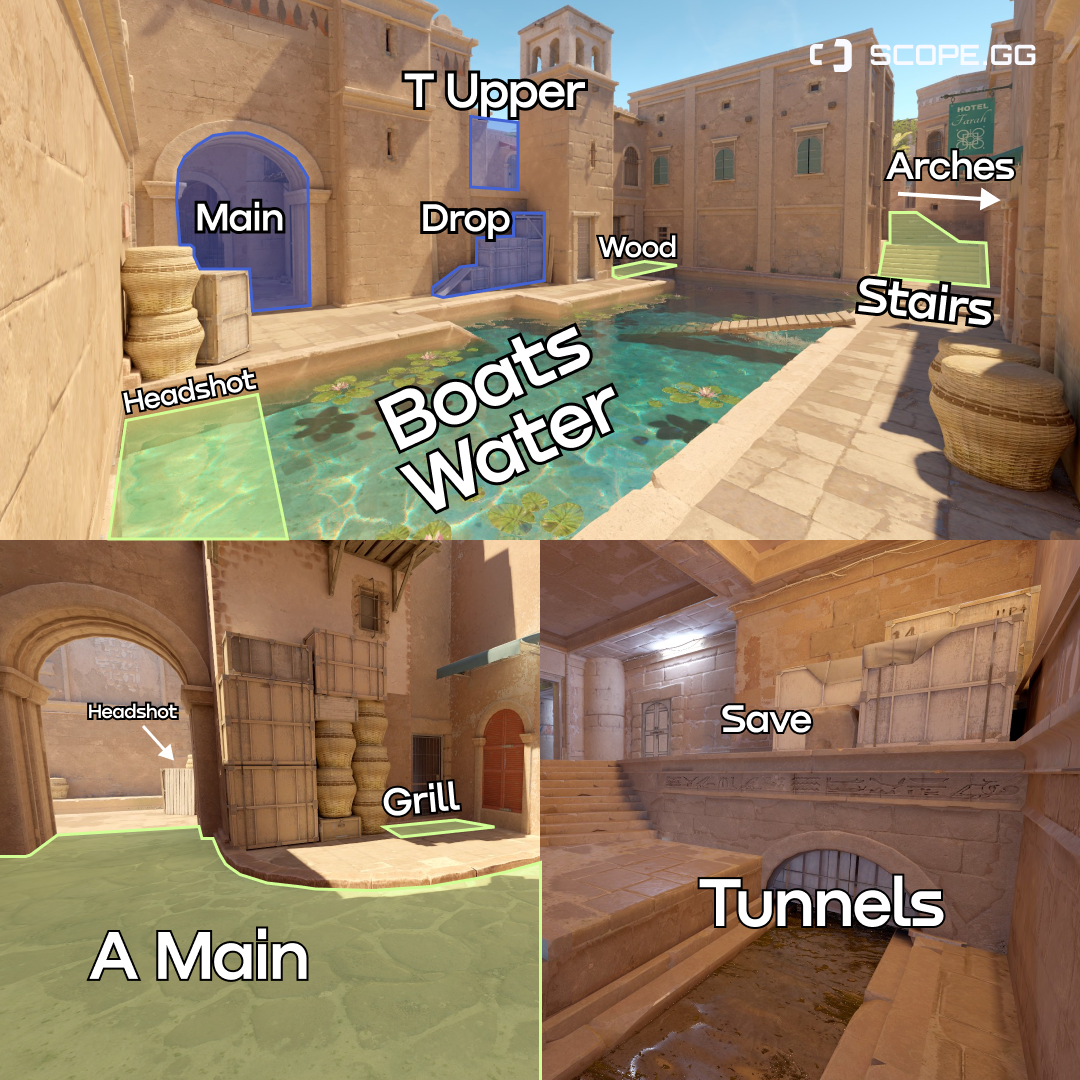
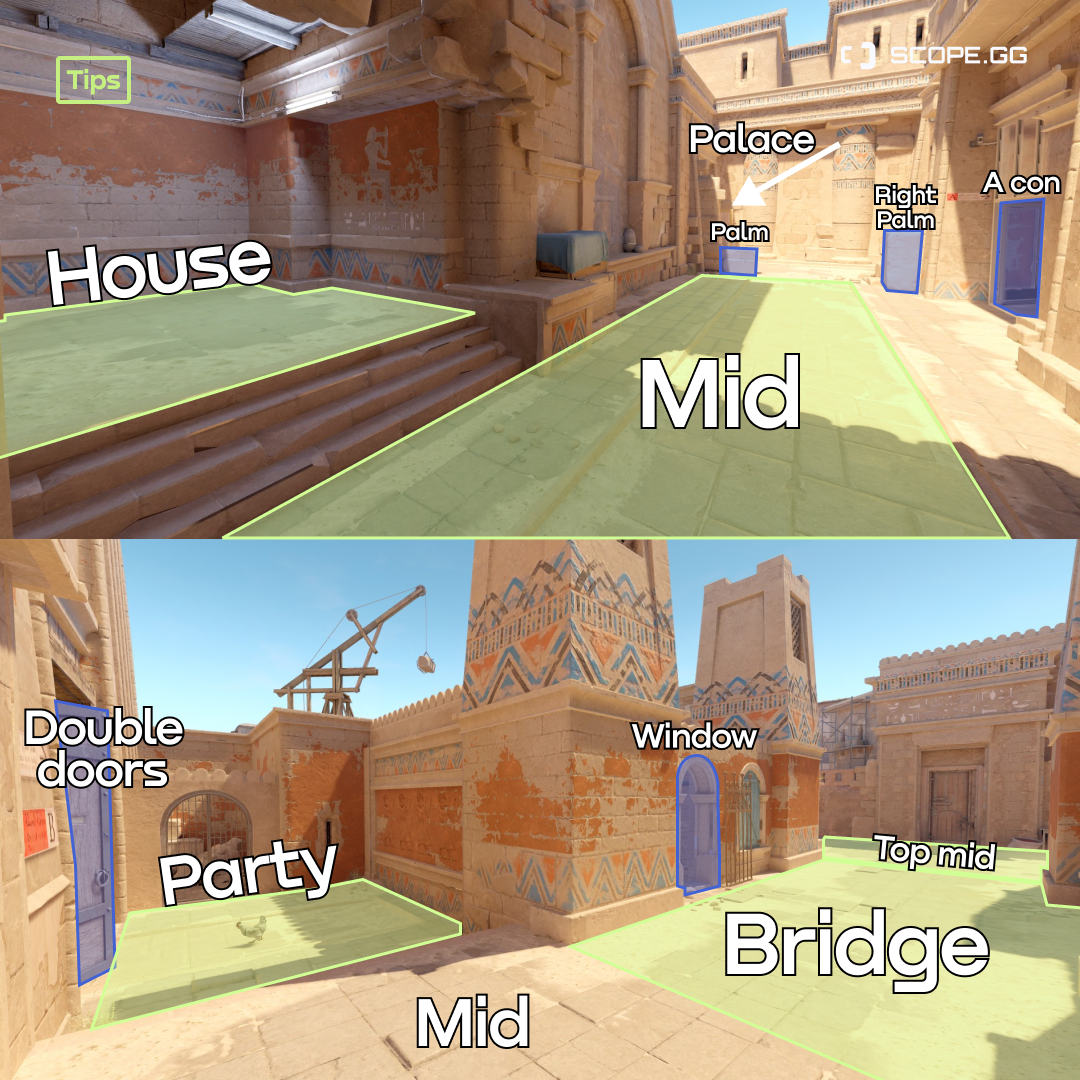
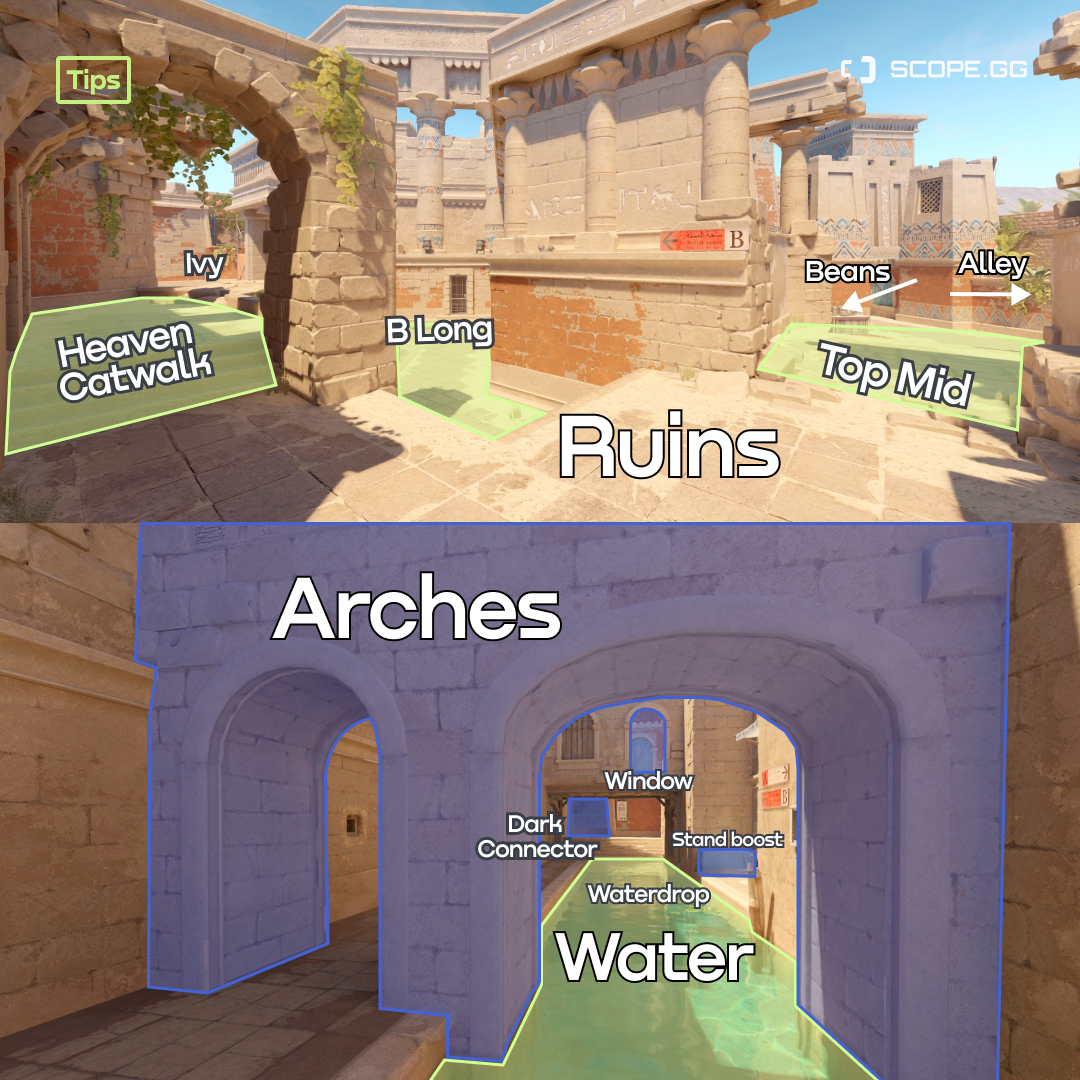
Anubis is the newest map in the competitive map pool, but already quite good in terms of balance. Wide alleys and plenty of options for unexpected pushes make the defense feel agile when playing on any of the sites. A lot of possible options for A or B site execute and the classic Mid location allow the Ts to quickly get the control over some key positions on the map.
What you need to know: the callouts of all key positions inside the bombsite. This will greatly simplify communication and effectively convey information about the enemy to teammates.
Check the callouts and come up with new tactics for future rounds in your games. It's easier with SCOPE.GG. Use a special tactical board that will help you explain new tactics to your teammates. You can find it on this page.
Good luck!


